Please note: In October 2020, we updated the DXOMARK Camera test protocol. Version 4 now includes image preview tests and a wide range of new test scenes as part of our new trustability evaluation which measures the camera’s ability to deliver consistent still image and video quality across all shooting scenarios. We have retested this device using the new version 4 of the test protocol and produced this completely updated review. For more information, please see our article about preview, trustability and other version 4 updates of the DXOMARK Camera test protocol.
The Apple iPhone 11 Pro Max, which has been supplanted by the iPhone 12 Pro Max flagship in October, features a 6.5-inch Super Retina XDR OLED display, A13 Bionic chipset, and up to 512 GB of internal storage. It is the first iPhone to come with a triple-camera setup. Next to the primary wide-angle and the tele-camera, which both offer the same focal length as on the predecessor XS Max, there’s now also an ultra-wide camera with a 13 mm-equivalent field of view.
On the image processing side of things, the Apple’s Deep Fusion technology uses the chipset’s neural engine and advanced machine learning to perform pixel-by-pixel optimization for better textures, lower noise, and a wider dynamic range. Read our full review following to find out how the new components play together. (You can find out more about some of the iPhone 11 Pro Max’s new imaging features, including the redesigned camera interface, seamless zooming in video, live bokeh, and HDR preview, in this previous article.)
Key camera specifications:
- Triple-camera setup
- Primary: 12 MP 1/2.55″ sensor, 26 mm-equivalent f/1.8-aperture lens, PDAF, OIS
- Ultra-wide: 12 MP sensor, 13 mm-equivalent f/2.4-aperture lens
- Tele: 12 MP 1/3.4″ sensor, 52 mm-equivalent f/2.0-aperture lens, PDAF, OIS
- Quad-LED dual-tone flash
- 4K video, 2160p/60 fps (1080p/30 fps default)
About DXOMARK Camera tests: For scoring and analysis in our smartphone camera reviews, DXOMARK engineers capture and evaluate over 3000 test images and more than 2.5 hours of video both in controlled lab environments and in natural indoor and outdoor scenes, using the camera’s default settings. This article is designed to highlight the most important results of our testing. For more information about the DXOMARK Camera test protocol, click here. More details on how we score smartphone cameras are available here.
Test summary
Scoring
Sub-scores and attributes included in the calculations of the global score.
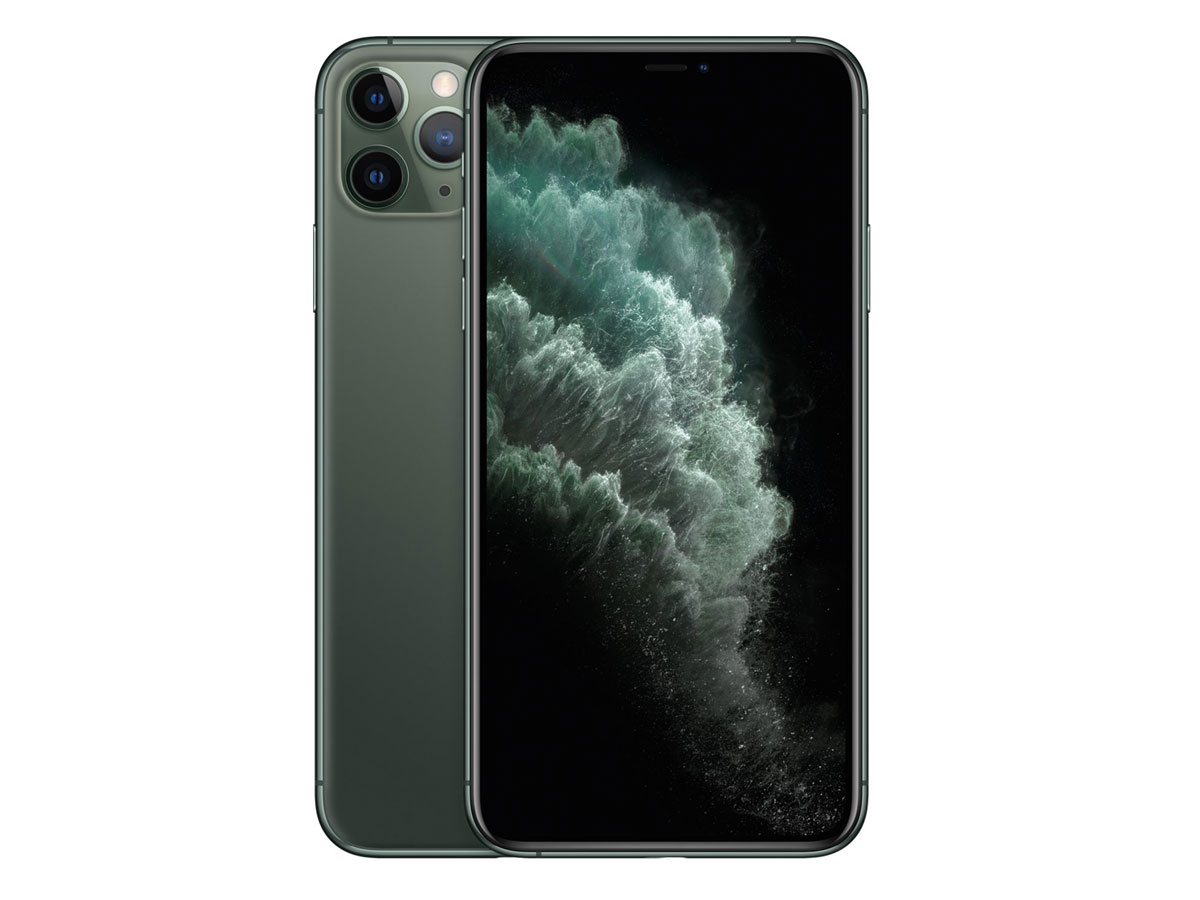
Apple iPhone 11 Pro Max


Use cases & Conditions
Use case scores indicate the product performance in specific situations. They are not included in the overall score calculations.
Outdoor
Photos & videos shot in bright light conditions (≥1000 lux)
Indoor
Photos & videos shot in good lighting conditions (≥100lux)
Lowlight
Photos & videos shot in low lighting conditions (<100 lux)
Friends & Family
Portrait and group photo & videos
With an overall DXOMARK Camera score of 124, the Apple iPhone 11 Pro Max secures a respectable ranking in our database. Though obviously not as impressive relative to the best of the competition as it was when we first reviewed it over a year ago, this iPhone remains a very capable imaging tool. Its Photo score under our new testing protocol is 132, putting it in the in the top ten for this particular sub-score.
The main camera captures plenty of detail under most conditions, though noise is a bit higher than we’d like to see. Exposures are accurate all way down to low light levels and dynamic range is fairly wide, though this year-old iPhone can’t keep up with the best devices now available when it comes to extreme contrast: we saw more blown highlights in those situations than with the latest HDR leaders. Color remains a strong point for this iPhone, with very nicely saturated colors in outdoor scenes and pleasantly rendered skin tones. White balance is usually accurate, though color casts are sometimes visible when shooting indoors.
When shooting in bokeh simulation mode, this iPhone achieves good results, but is not among the best. Slight depth estimation errors are visible in all conditions, but noise on subjects and in the background are improved compared to the XS Max.
In very low light, the iPhone’s image quality drops noticeably, with less detail and more noise in photos than the best of the competition.
With a zoom score of 59 the the iPhone 11 Pro Max isn’t quite up with the very best for this test category. The camera has a 2x tele-camera module, a spec that’s looking a bit dated now that so many flagship phones offer longer focal lengths for zooming in more. The tele-camera is quite capable at its native focal length, so short zoom images look good, but quality suffers at medium and long zoom ranges, with more noise and less detail than the better competition.
On the wide end, the iPhone remains more current, with its 13.7 mm-equivalent field of view (measured) offering more coverage than many recent competitors. Image quality is acceptable, with nice color rendering, though noise is higher and detail lower than is ideal.
With a Video score of 109 the iPhone flagship remains among the best smartphones for recording moving images under under new test protocol. Apple was early to HDR video and the iPhone 11 Pro Max does a very good job recording clips of high dynamic range scenes, even by late 2020 standards. Exposure is also otherwise quite good, darkening substantially only at really low illumination levels. At 4K resolution, the iPhone records highly detailed video with low noise in good light, though noise becomes more of an issue when light levels drop. Color is vivid and pleasant, though white balance can be a little unstable when recording indoors.
Video autofocus is very smooth, with good tracking capabilities, and stabilization is very effective in most situations. Only when recording while walking is a jello effect frequently visible in the iPhone’s video clips.
Photo scores explained
The Apple iPhone 11 Pro Max achieves a Photo score of 132 points. The Photo score is calculated from sub-scores in tests that examine different aspects of a device’s performance for still images under different lighting conditions. In this section, we take a closer look at how these sub-scores were determined and compare image quality against some key competitors.

Exposure and Contrast
Apple iPhone 11 Pro Max
90
111
The iPhone 11 Pro Max exposes accurately, even in low-light conditions. However, as we can see in the entropy chart below (which measures dynamic range at several contrast levels), the iPhone struggles with a 7EV spread between light and dark. It usually does better than the Xiaomi Mi 10 Ultra, but the Huawei P40 Pro provides much better (and consistent) dynamic range across the tested light and contrast levels.
In the comparison below, the iPhone loses highlights in the sky, while the Huawei does a very good job of maintaining highlight and shadow detail. The Xiaomi does better with the sky than the Apple, but the main subject exposure is a little low.
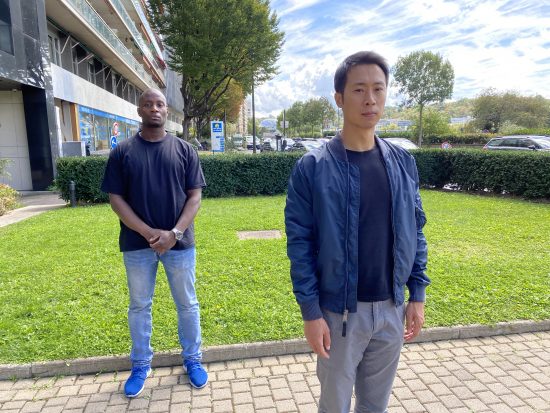
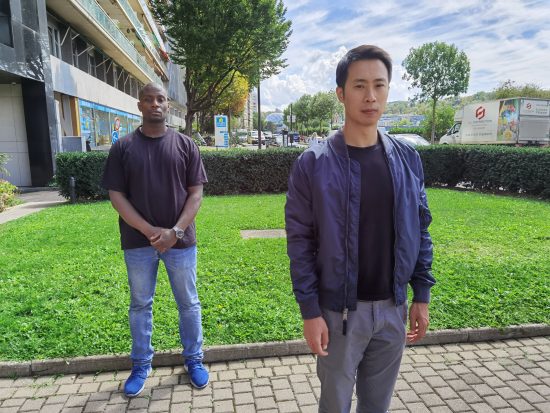
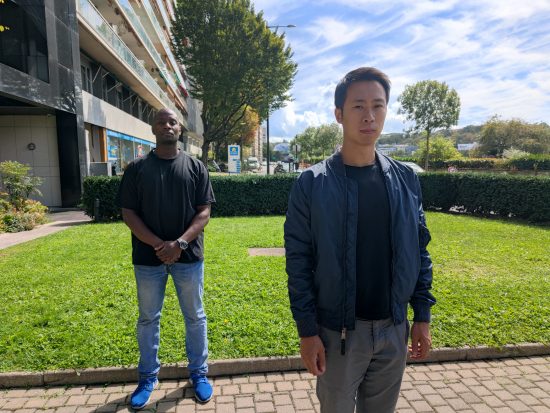
The iPhone generally exposes well in low-light scenes with low to middling contrast, but as in bright light, high dynamic range poses problems. In the challenging indoor lighting of the next example, the iPhone holds the highlight detail in the background but badly underexposes the model. The Huawei delivers a nicely balanced exposure, while the Xiaomi loses the highlights while leaving the model’s face a bit too dark.




Color
Apple iPhone 11 Pro Max
105
107
The iPhone’s 11 Pro Max delivers excellent color in outdoor conditions, achieving highest score of all devices tested under the latest version of DXOMARK Camera to date. As in previous models, Apple has tuned the camera for images to come out very slightly yellow, which is well within acceptable limits and in most situations makes for pleasant results, though indoors this can appear as a slightly less desirable color cast. Even in very low light, color rendering remains pretty good despite more obvious color casts.
In the examples below, the iPhone actually delivers the most accurate and neutral color rendering, while the reference devices run warmer.
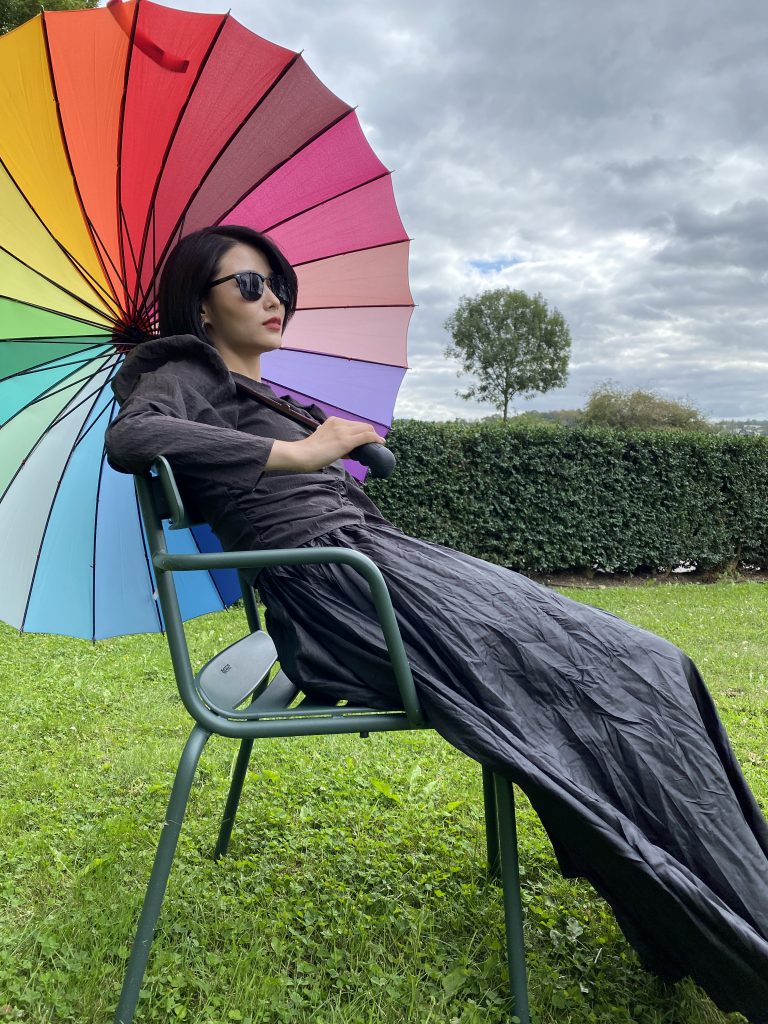
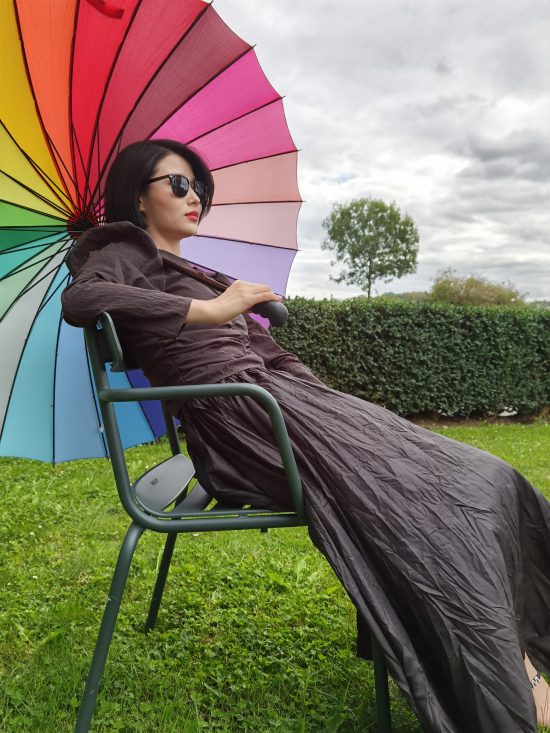
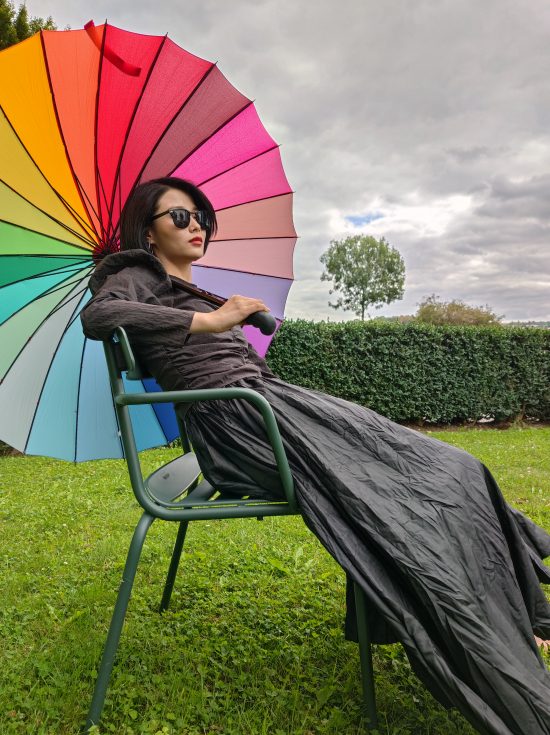

Autofocus
Apple iPhone 11 Pro Max
104
109
The iPhone 11 Pro Max’s autofocus performed well in our lab tests and in real-life shooting alike. It is very accurate and locks on quickly in lighting conditions all the way down to a low 20 lux, slowing down (as do many phones) only in the near-darkness of our 5 lux test.
The iPhone’s good subjective autofocus performance was backed up by our previous testing protocol, and this continues to be the case with our updated test protocol, which includes HDR scenes. In this comparison graph we see that in high-contrast conditions (a difference of 7EV between the darkest and brightest part of the scene), the Apple and the Xiaomi focus quickly and accurately, with the Apple having the most consistent performance of all three phones. The new test protocol also reveals that the Huawei P40 Pro, which focused very quickly under the old testing conditions, takes longer when faced with a high dynamic range target.
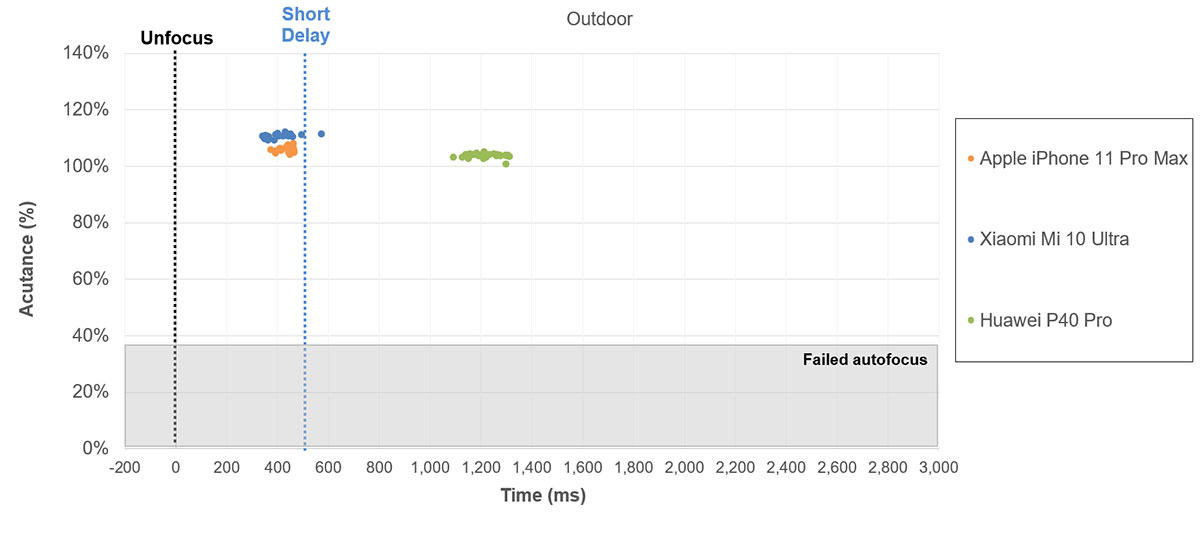
In the next example, we see that all three phones focus accurately in low light. Thanks to a wide depth of field, the iPhone and Xiaomi keep both faces in sharp focus, while the Huawei leaves the farther face very slightly soft.

Noise
Apple iPhone 11 Pro Max
70
102
The iPhone 11 Pro Max nicely balances noise and detail, though the very best devices can do a little better. In the chart below, based on data from our new AI-based texture measurement protocol, we see that all three devices are very close in bright light, but a gap opens up between the iPhone’s texture performance and the other two as light levels drop (though the Xiaomi rejoins the Apple at the lowest tested light level).
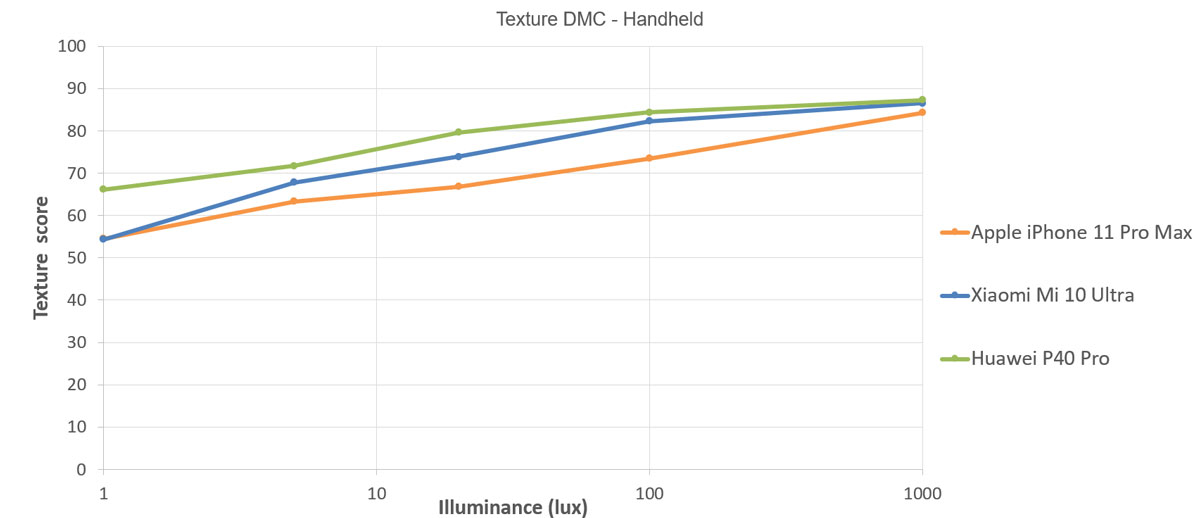
In the example below, we see that all three phones capture a lot of detail and keep noise well under control. The Xiaomi uses more aggressive sharpening.
In low light, as the test data suggests, the iPhone’s performance drops more noticeably behind the P40 Pro’s impressive showing. The example below, shot at extremely dim 1 lux illumination, shows that the iPhone retains less detail while displaying more noise than the Huawei.
The Apple iPhone 11 Pro Max camera generally controls image artifacts very well, which is why the device achieves a high score in this category. When viewing images at full size, some ringing can be visible along high-contrast edges, but it’s usually not too intrusive. Our testers also found flare artifacts in a small number of our sample images, such as in the shot below, but the iPhone generally controls flare well.

Bokeh
Apple iPhone 11 Pro Max
65
80
The Apple iPhone 11 Pro Max achieves a good score for bokeh. It’s a slight improvement over the XS Max, mainly because of lower noise levels, but it is not quite on the same level as the very best competitors.
Some minor depth estimation errors are visible in the sample below, but its portrait mode images show decent depth estimation as well as a nice bokeh shape and gradient, making for quite natural-looking results overall.
We can see in the comparison to the Galaxy Note 10+ 5G below that the Samsung device is capable of separating the foreground subject from the background more precisely. Some depth estimation artifacts are visible around the subject in the Apple image; they are much less intrusive in the Samsung image.

Night
Apple iPhone 11 Pro Max
50
82
The iPhone 11 Pro Max achieved a Night score of 50. Images show good exposure as well as natural white balance and color rendering, even in difficult mixed lighting situations, and good skin tones in portrait shots. On the downside, we saw some clipping in illuminated areas of the scene and some slight ghosting on moving subjects.
Flash-auto mode, on the other hand, leaves some room for improvement. The camera captures fairly good detail in this mode, but noise is quite visible and the flash sometimes triggers for landscape shots where it cannot help illuminate the scene. We also saw some overexposure on faces in portrait shots, resulting in highlight clipping on skin tones and inaccurate color rendering.

Preview
Apple iPhone 11 Pro Max
74
80
The iPhone 11 Pro Max is the best device we’ve tested for preview image quality so far, thanks to accurate exposure and bokeh representation, as well as good zoom smoothness. HDR video technologies ensure the device is able to handle highlights well in its preview image. So even in high-contrast scenes, what you see in preview is very close to the final capture.
Occasionally when shooting portraits in high-contrast scenes, preview prioritizes the brightness of the face at the expense of preserving highlights. So some detail is lost in the sky compared to the final capture, but even in these examples, highlight preservation is better than many other devices we’ve tested. The device’s main weakness is some slight underexposure and visible noise in low light, but these issues remain minor overall.
Bokeh rendering in preview is pretty good, thanks to its uniform blur in the background and good subject isolation. Activation isn’t perfect, and although it occasionally fails to display as you switch over to portrait mode, taking a step closer to your subject usually helps. The depth-of-field effect is stronger in the final image, and the blur gradient effect is more realistic than the preview initially suggests, but these issues are again fairly minor and the iPhone 11 Pro Max’s bokeh preview is reassuringly convincing.
Good parallax alignment and effective image fusion between multiple cameras delivers pleasant smoothness when pinch zooming on the iPhone 11 Pro Max. Focus is excellent, too, with the preview image remaining sharp at all focal lengths as you zoom in. Exposure adaption is also fairly responsive, aside from some minor exposure instabilities that our testers observed under bright light conditions.
Zoom scores explained
The Apple iPhone 11 Pro Max achieves a Zoom score of 59 points. The Zoom score is calculated from the tele and wide sub-scores. In this section, we take a closer look at how these sub-scores were achieved and compare zoom image quality against some key competitors.

Tele
Apple iPhone 11 Pro Max
71
140
Like its predecessor XS Max, the iPhone 11 Pro Max comes with a 2x optical tele-lens that offers a 52 mm-equivalent field of view. With this setup, the Apple device usually achieves good zoom results at close zoom ranges, despite limited dynamic range, but at medium and long range, it cannot keep up with the 3x and 5x tele-modules that some competitors now offer. Noise is visible in all light conditions.
At the short (2x) zoom range, detail is usually good. In the example below, which was shot in low light at 5 lux, the iPhone produces a satisfying photo, though it lacks the dynamic range of the Huawei’s output and also shows more noise (but a similar level of detail).
Our testers also noticed that sometimes at short zoom ranges where you’d expect the 2x tele camera module to take over, the iPhone instead cropped from its main camera, resulting in substantially lower-quality output than usual.
At medium zoom ranges, the 11 Pro Max captures less detail than we’d hope, with quite a bit of noise in the image. In the scene below, the Google Pixel 4 captures more clean detail despite having a 2x zoom module like the iPhone. The Huawei, with its longer tele-module, predictably does better than both.
At long zoom ranges, the 11 Pro Max can’’ keep up with most phones that have 3x or 5x tele-modules, and detail drops substantially.

Wide
Apple iPhone 11 Pro Max
40
58
The iPhone 11 Pro Max was the first Apple device to feature an ultra-wide camera. At 13 mm (13.7 mm measured), it offers one of the widest fields of view currently available, close to such Samsung devices as the Note 10+ and the Galaxy S10+. Overall, the image quality of the ultra-wide camera is quite far from the level of the primary module, but that is true for most current smartphones.


The 11 Pro Max’s Wide score is close to that of the Galaxy Note 10+ 5G (42), but as with the primary camera, the two devices apply a different texture/noise tradeoff. The Apple images show more detail than the Samsung, but are generally also noisier. Color rendering is good and anamorphosis (deformation of faces) is visible nearer the edges of the frame, but considering the wide field of view of the lens, it is quite well controlled.
In the indoor sample shot below, you can see that the level of detail in these conditions is not on the same level as the main camera, but the Apple is slightly better than its Samsung rival. Noise is less visible in the Samsung image, however.
Video scores explained
With an overall Video score 109 points, the Apple iPhone 11 Pro Max does quite well in our new test protocol, slotting into our database just a few positions down from the top. The overall Video score is derived from results across a range of tests in the same way as the Photo score: Exposure (95), Color (95), Autofocus (101), Texture (76), Noise (90), Artifacts (80), and Stabilization (98). At default settings, the iPhone 11 Pro Max records video at 1080p Full HD resolution and 30 frames per second, but it achieves the best results at 4K resolution and 30 frames per second which we have tested for this review.
The iPhone 11 Pro Max earns a solid exposure score. In the chart below, we see that exposure does drop more in very low light than with the top-scoring Huawei P40 Pro, but this is still a reasonably strong showing. Our testers did note some exposure instabilities when shooting outdoors, however.
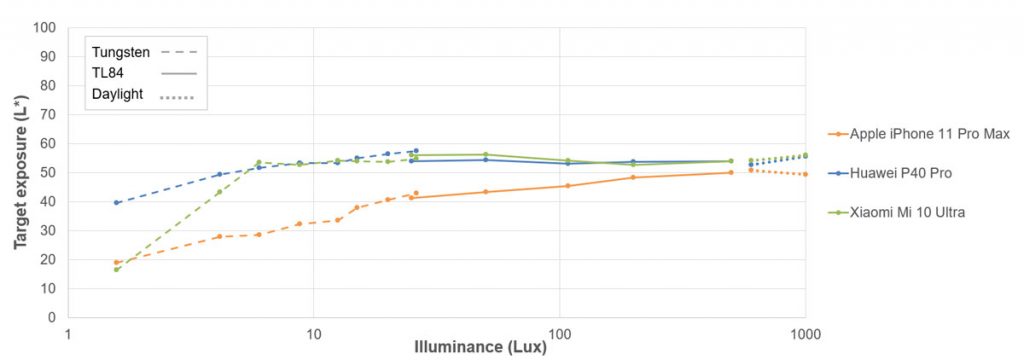
The iPhone 11 Pro Max’s good exposure score is partly due to its ability to capture scenes with wide dynamic range, holding on to both highlights and shadows in high-contrast conditions. We see this in the video comparison below, along with the high levels of detail that the iPhone retains in good light.
The chart below shows that detail does drop off more than some competitors as the light level decreases, though the Huawei does eventually descend to rejoin the iPhone at the lowest illumination tested.
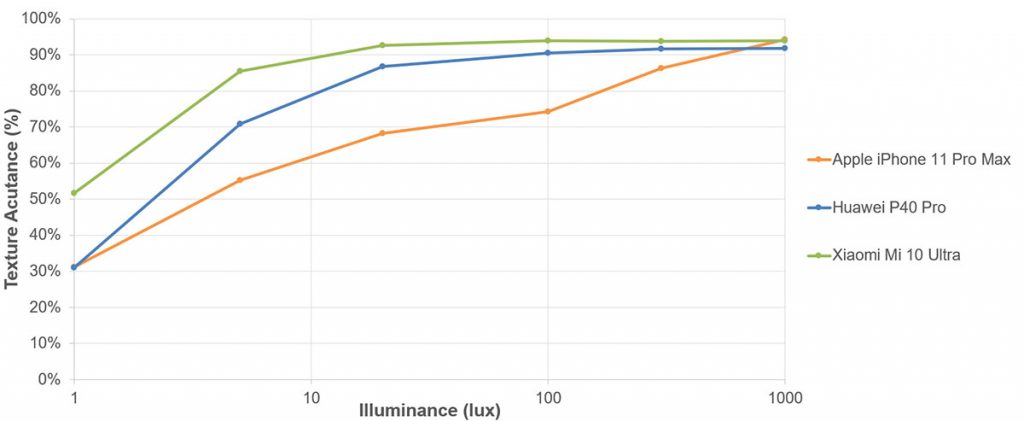
Noise is also well controlled until conditions get very dim, when strong luminance noise becomes visible.
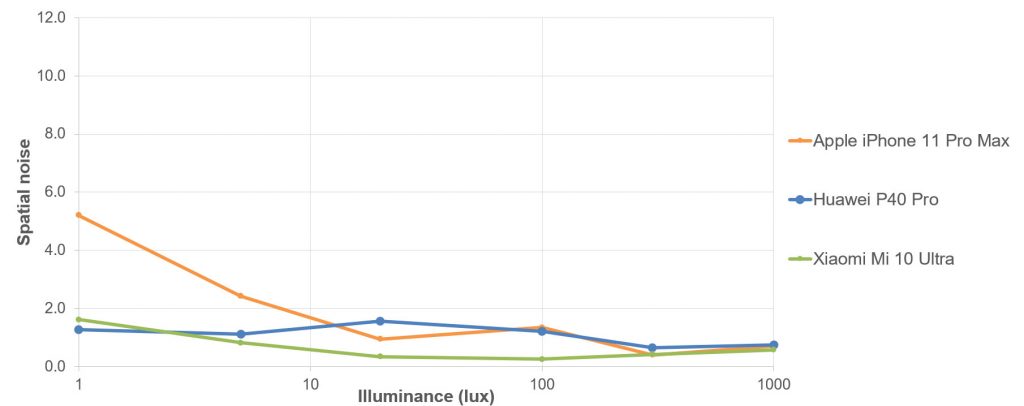
As with stills, the iPhone 11 Pro Max generally records vivid, pleasant color in videos, though white balance casts are sometimes noticeable and our testers saw occasional color instabilities when shooting indoors.
The iPhone controls artifacts well, but our testers did note some jello effect visible when walking or panning.
The autofocus system is not the fastest we have seen, but it’s fast enough. Further, it is very stable, operates very smoothly, and provides good tracking. As with previous iPhone generations, the 11 Pro Max stabilizes video very effectively.
Conclusion
Under the latest version 4 of our Camera test protocol the Apple iPhone 11 Pro Max remains a very attractive option but has lost some ground compared to the best competitors since it was launched more than a year ago. It’s still more than capable of capturing nice still images. Color is particularly impressive and the best preview mode we have tested to date helps getting exposure and framing right easily. It also does an excellent job for video recording and is one of the best smartphones for recording in difficult high-contrast situations. Overall, the iPhone 11 Pro Max is still an easy recommendation, especially if you’re already invested in the Apple eco-system.
Pros
- Good levels of detail in most tested conditions
- Accurate white balance indoors and out
- Pleasant color saturation and natural skin tones
- Accurate target exposure and wide dynamic range in most situations
- Fast, accurate, and repeatable autofocus
- Very wide ultra-wide lens, with good dynamic range, and well-controlled chromatic aberrations
- Wide dynamic range when shooting video
- High detail and low noise when shooting video
- Vivid and pleasant colors in videos
- Effective stabilization for video
Cons
- Noise visible in all light conditions
- Fine details lost in low light
- Loss of detail in long-range zoom shots
- Lack of detail in flash images
- Noise in ultra-wide images
- Jello effect visible when walking or panning
- Unstable white balance indoors in videos
- Exposure instabilities outdoors in videos
- Very visible luminance noise in low-light videos
Please also have a look at our Apple iPhone 11 Max Pro gallery below. It includes images that have been shot in a variety of situations and shooting modes for you to view and examine.
A note about image formats for this review: The iPhone 11 Pro Max records photographs in the DCI-P3 colorspace, which their displays also use. DCI-P3 is newer and larger than the sRGB color space that most devices use. So to ensure that the images we used in the review display properly on a wide variety of browsers and devices, we converted the originals from DCI-P3 to sRGB using Photoshop (which is why the published test photos show Photoshop as the creator). This can slightly reduce the richness of color in some cases from what you would see when viewing the original images on a DCI-P3-calibrated display with appropriate software. We also captured the original images using the new HEIF (High-Efficiency Image Format), but then converted them to very high-quality JPEGs for viewing in standard browsers and image editing software. (HEIF is very similar to JPEG, but provides better compression for similar image quality, so the conversion makes the sample image file sizes larger than they were when shot.) Please note, however, that unlike our test images, some of the comparison photos used in this review were shot in JPEG and are used as-is for illustrative purposes; they were not used to compute scores.


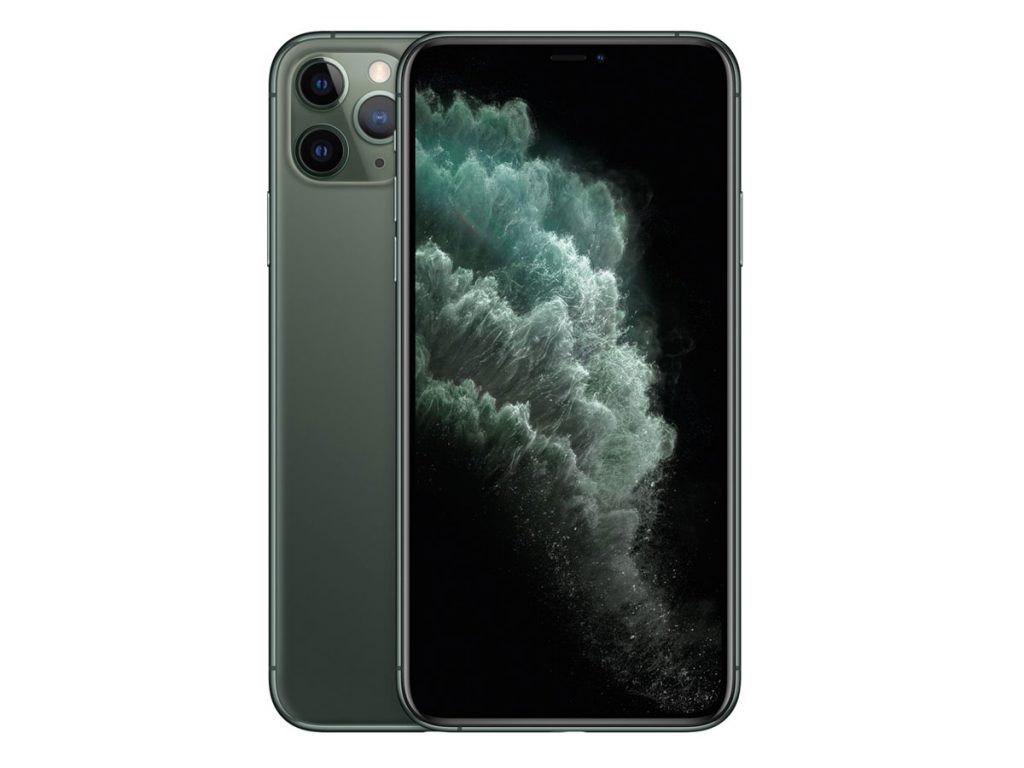






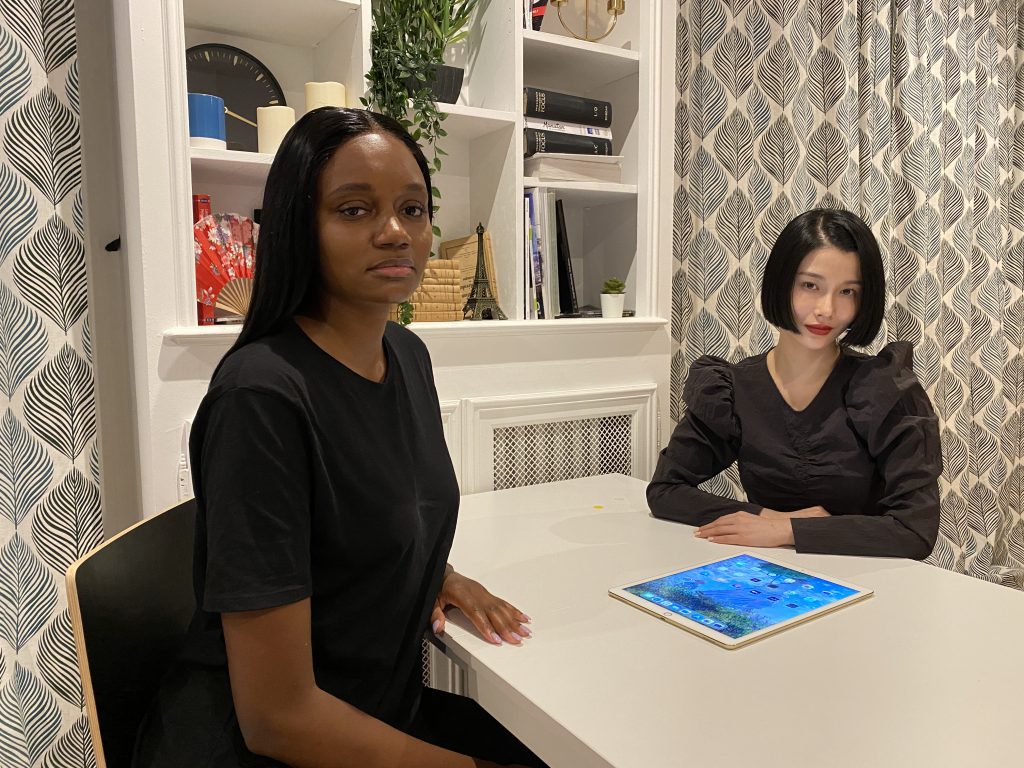
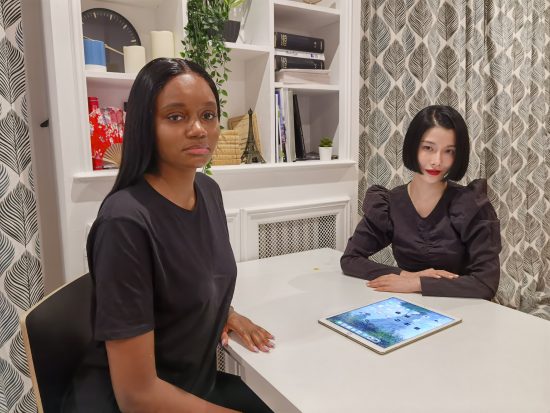





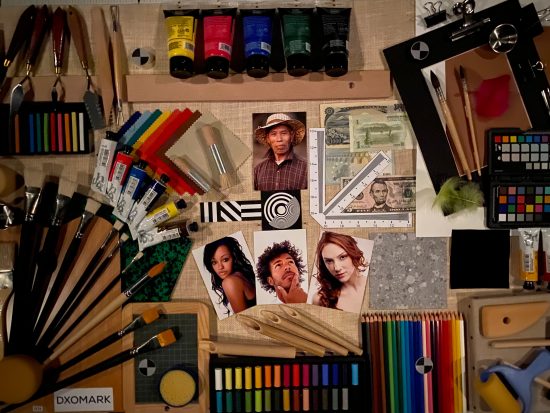
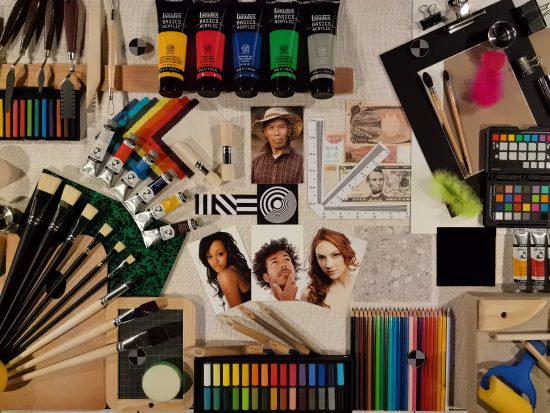

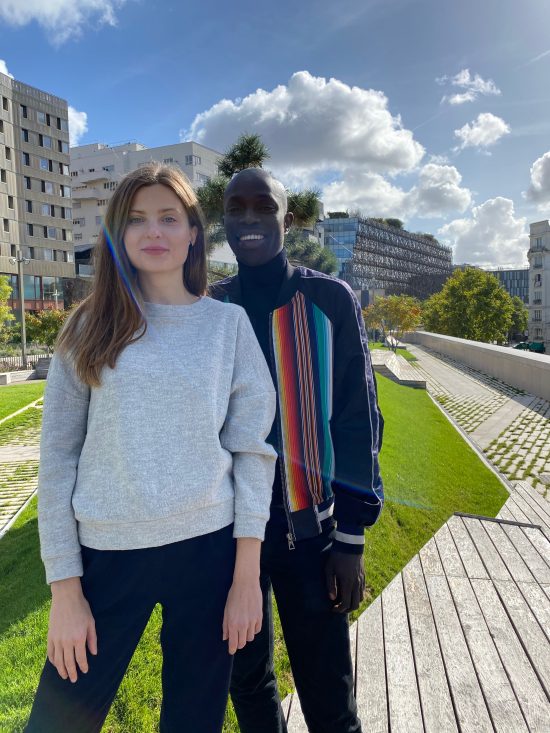
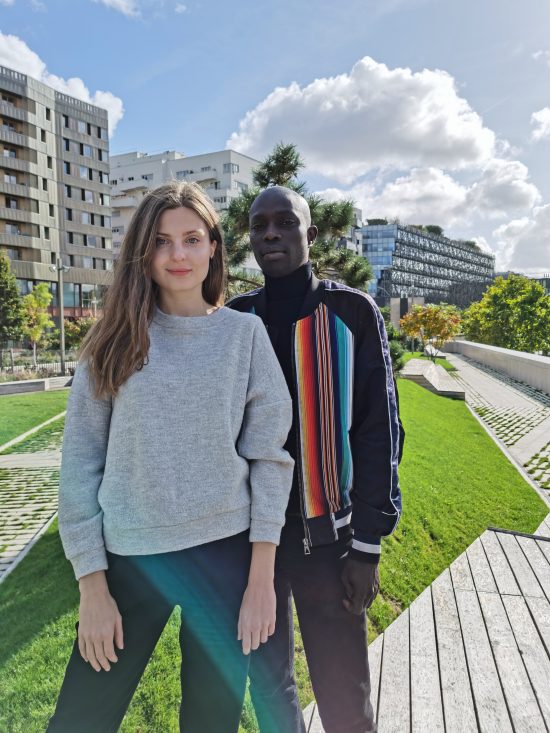
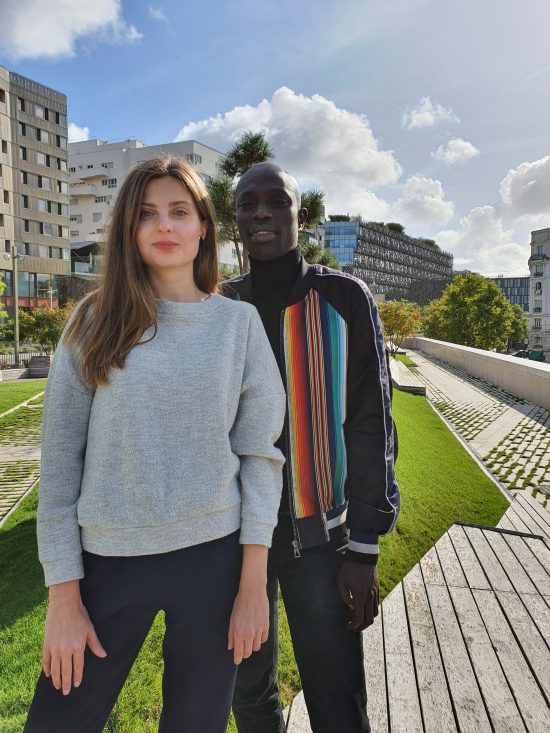



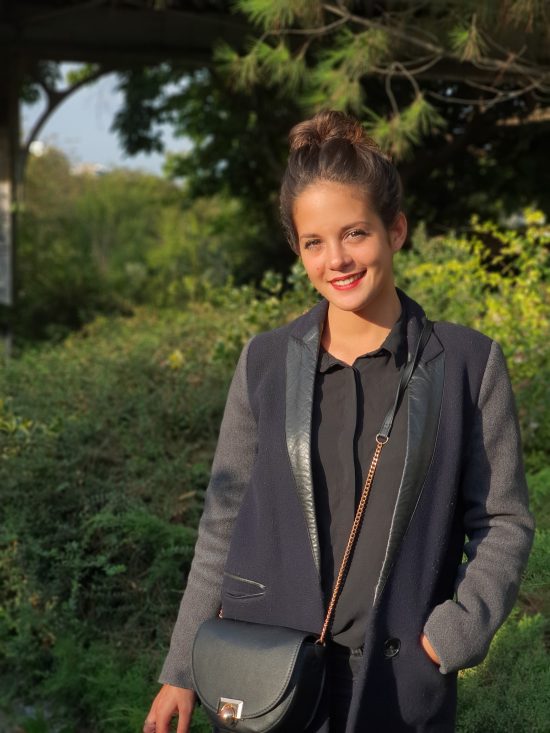
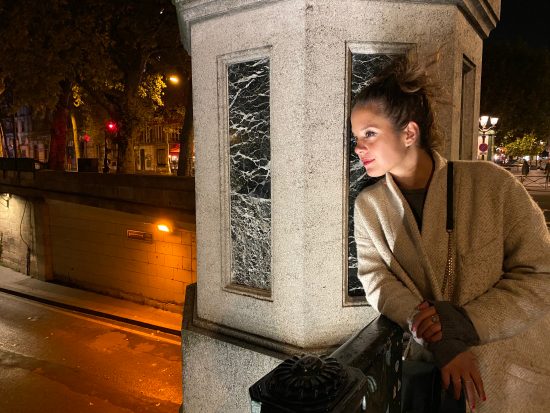
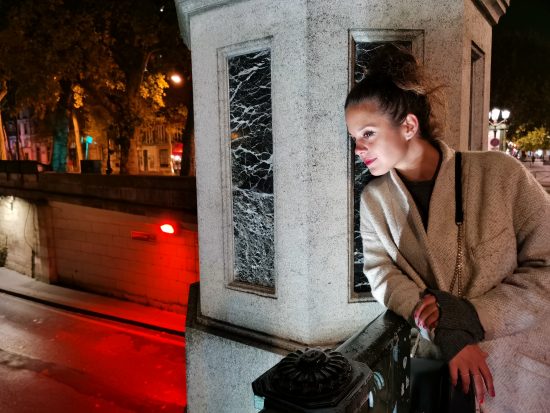
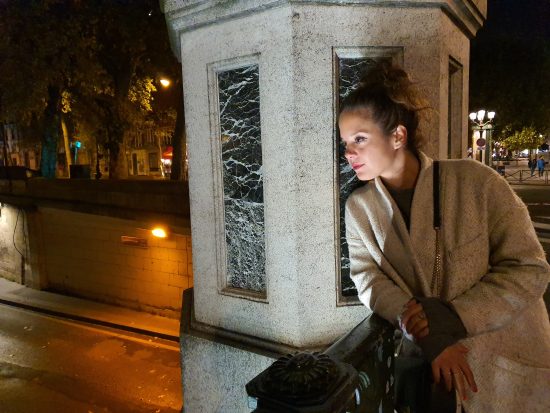

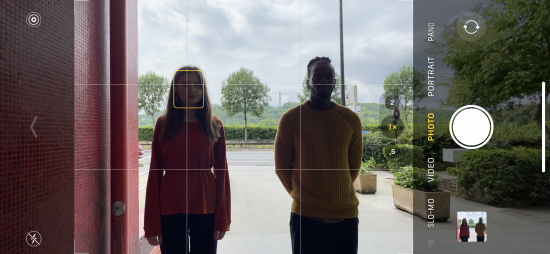
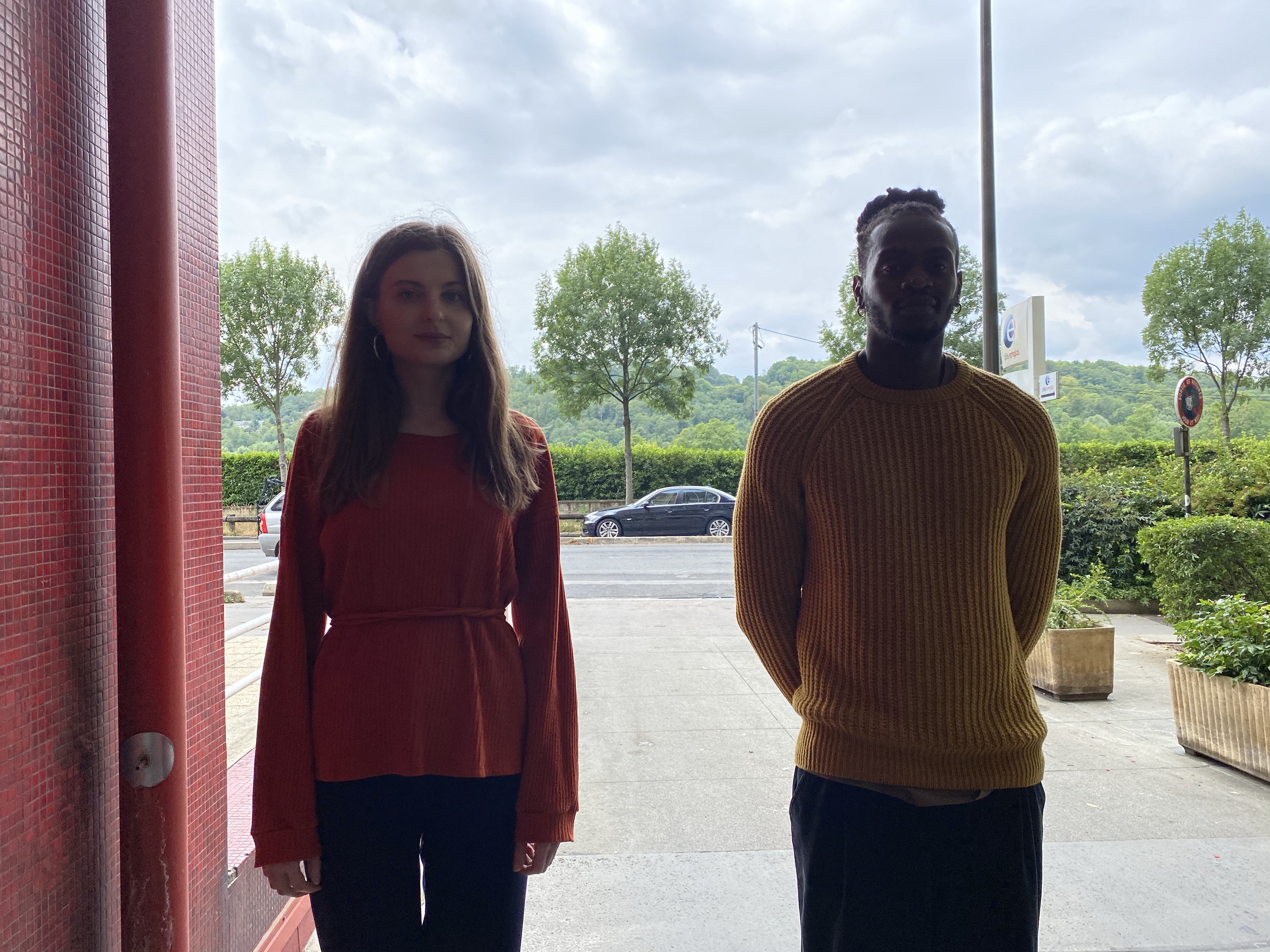
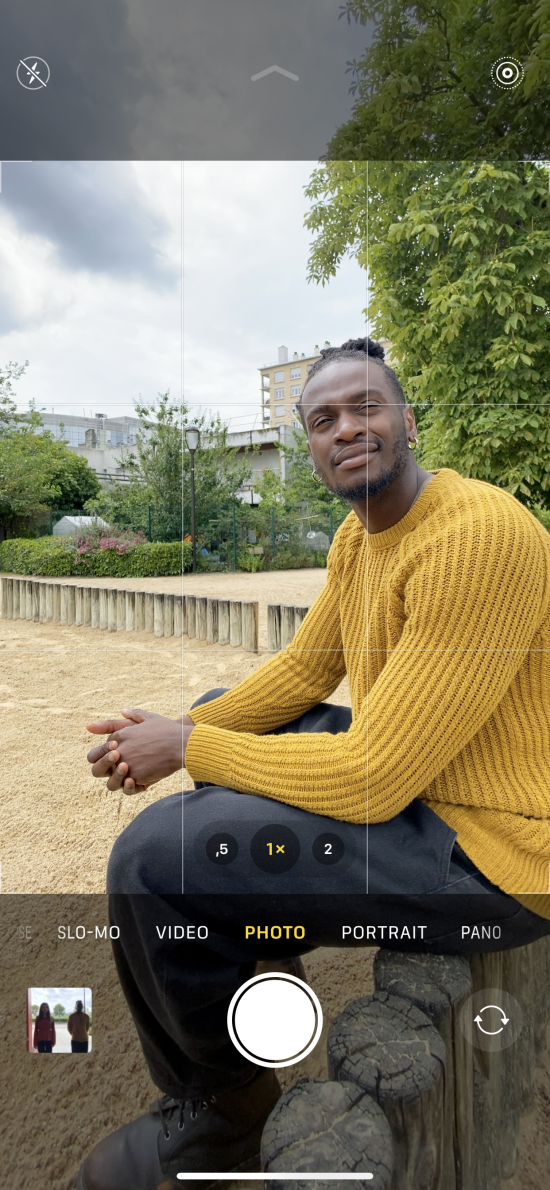

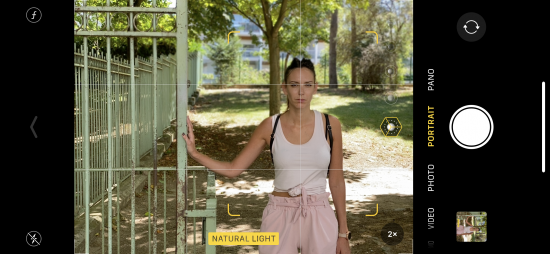

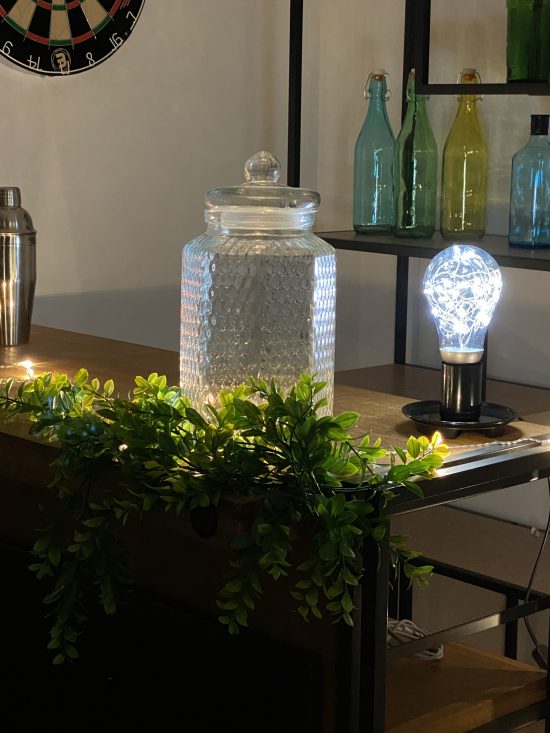
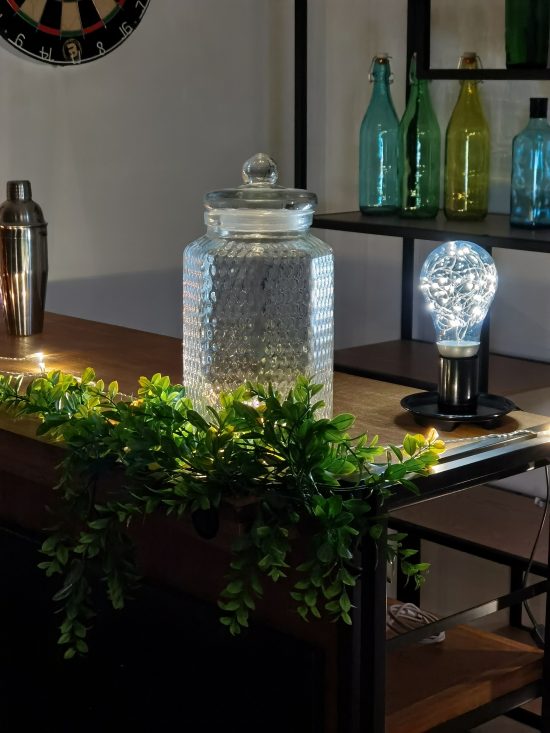















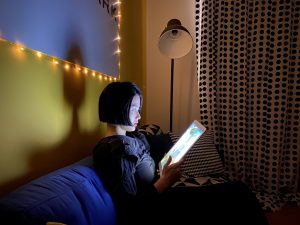



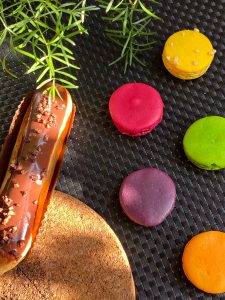







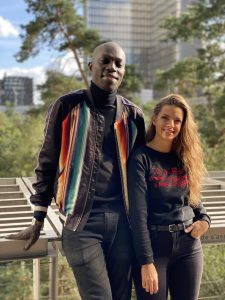

















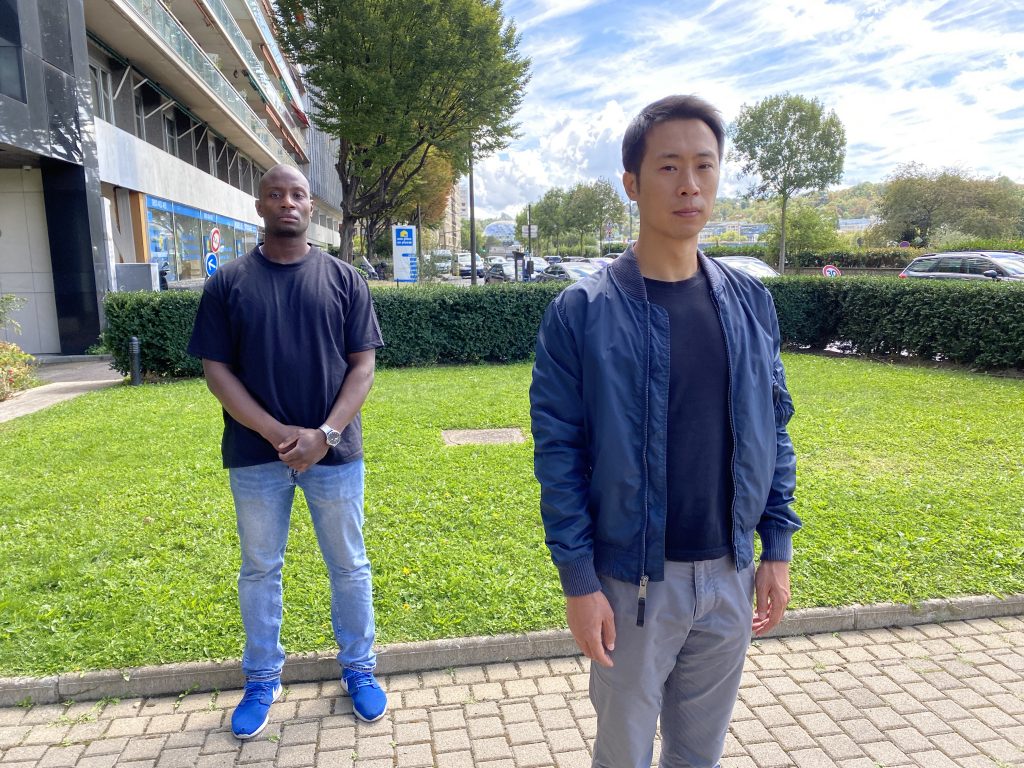

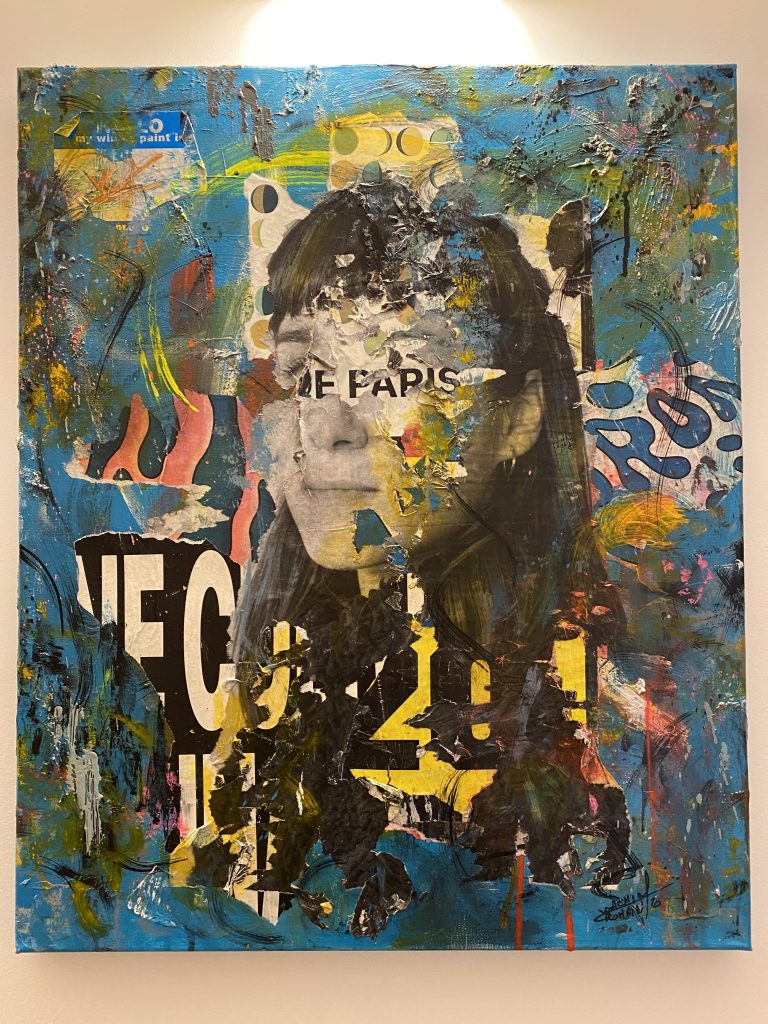
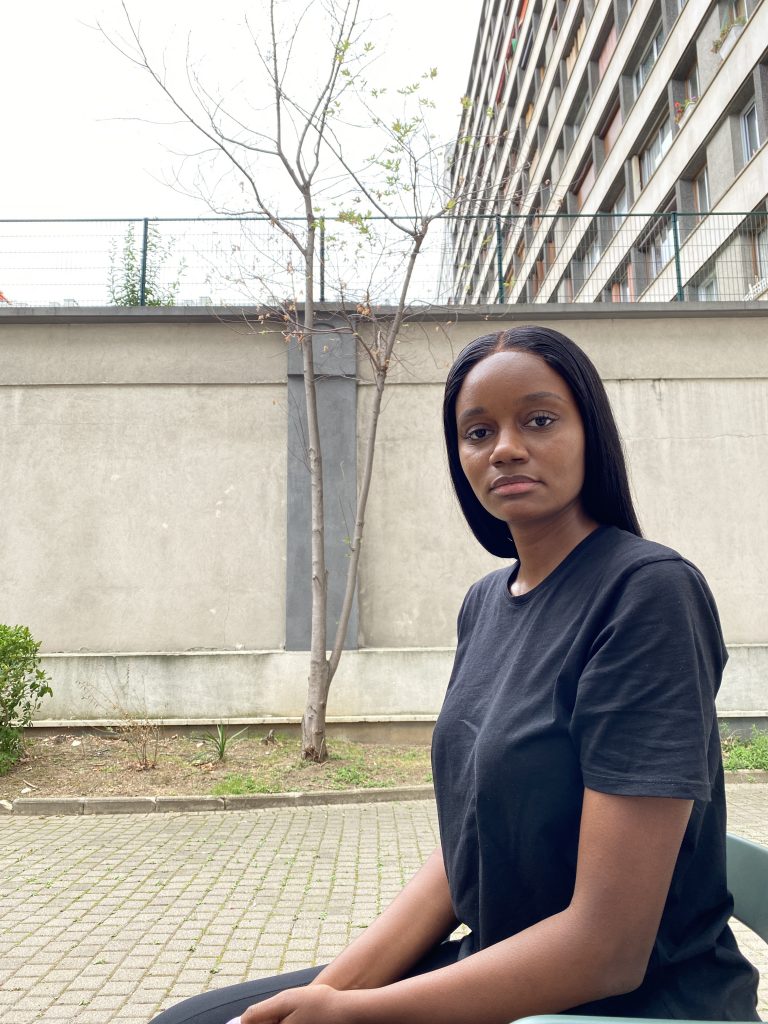


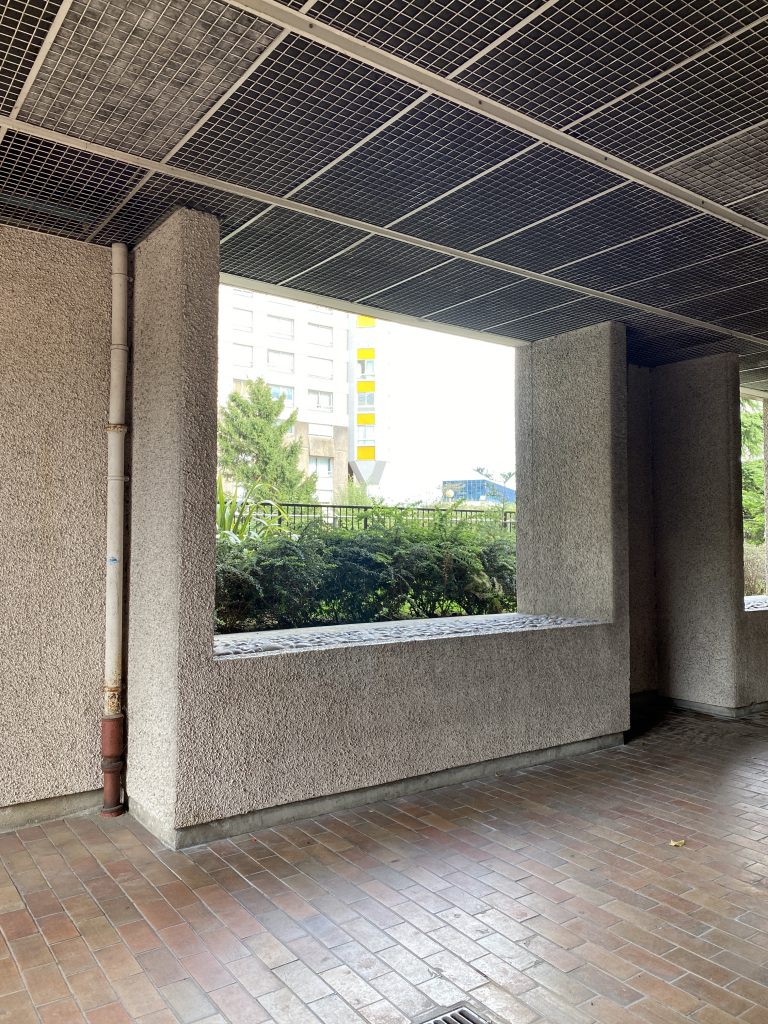

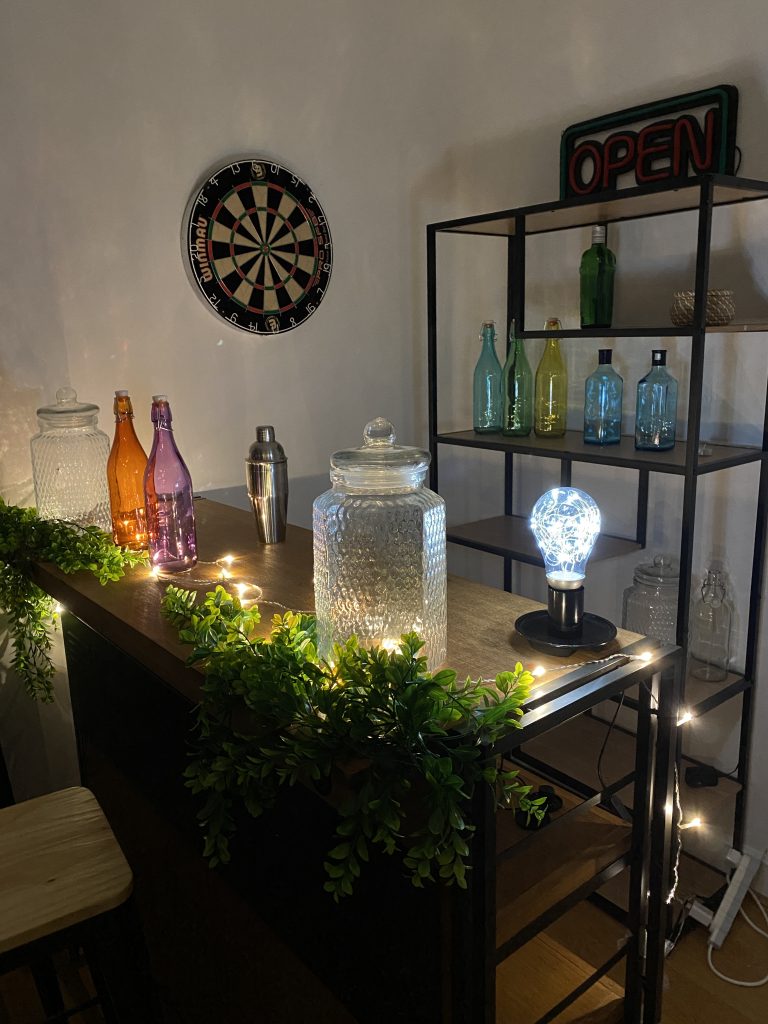

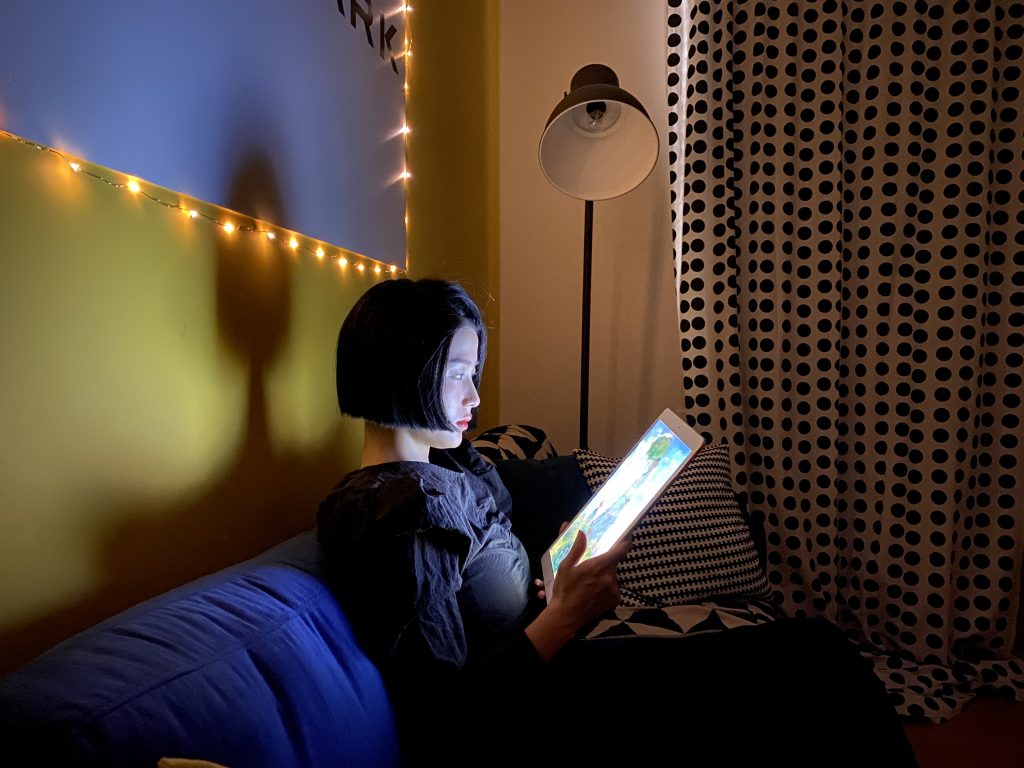

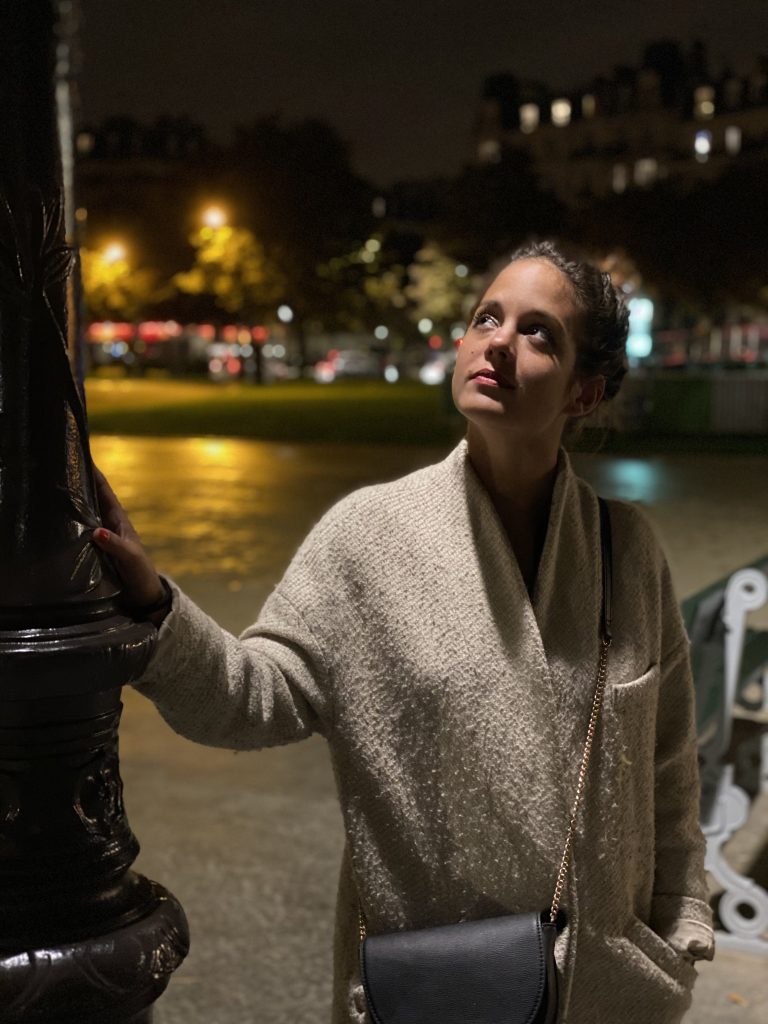
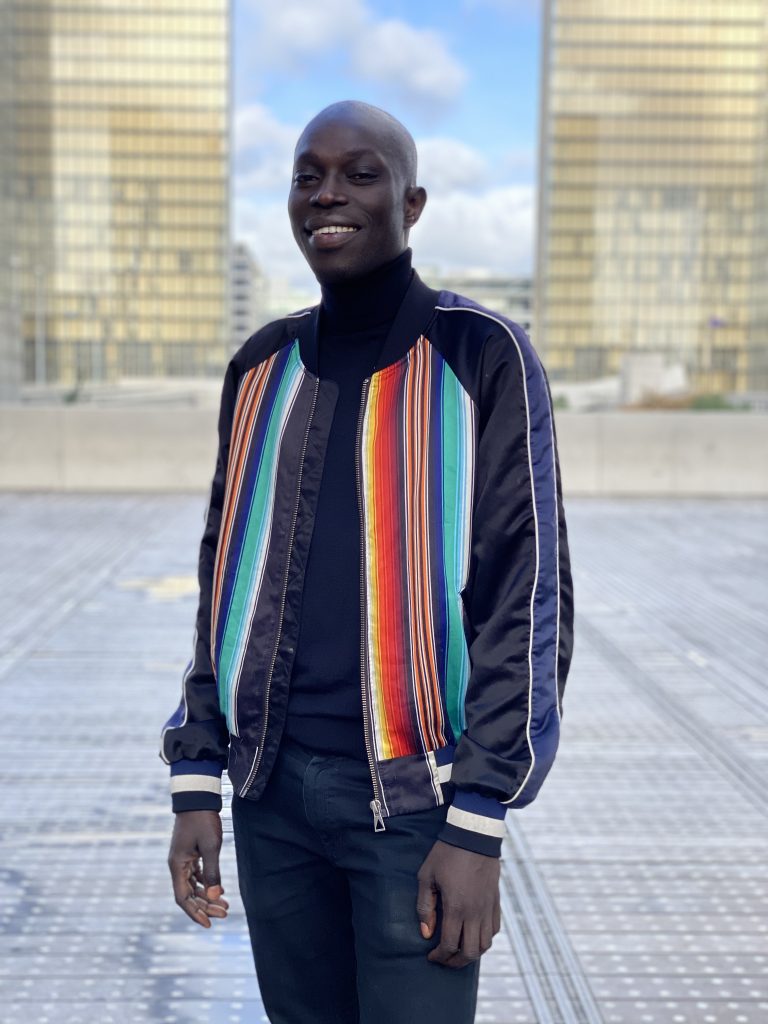
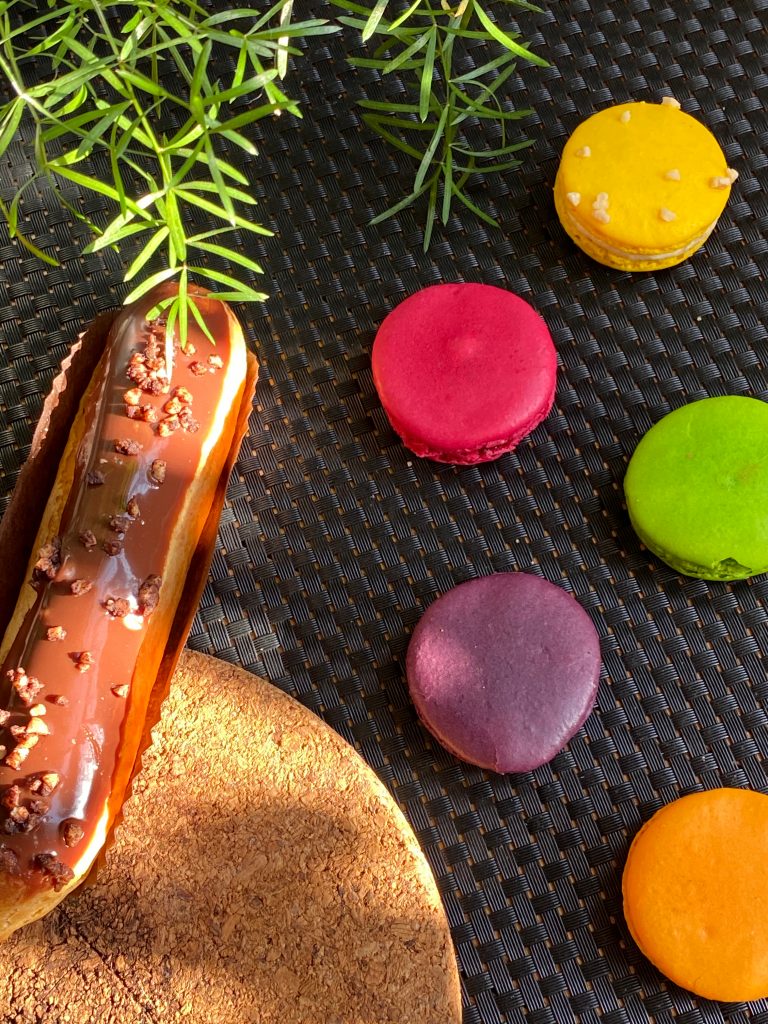

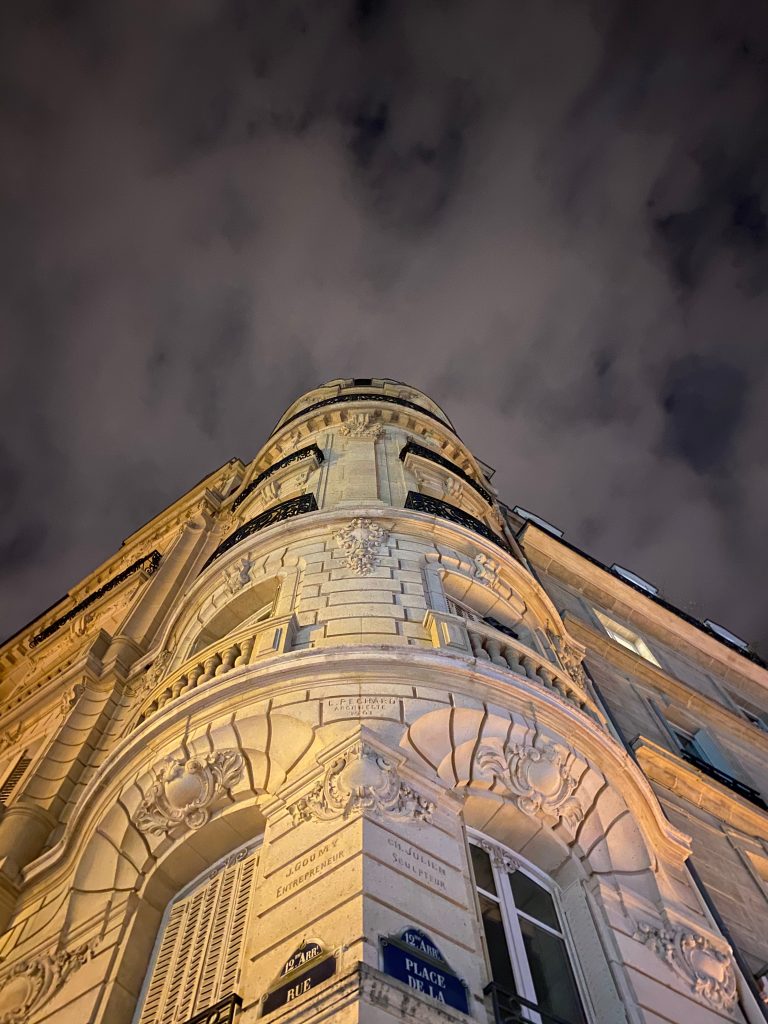




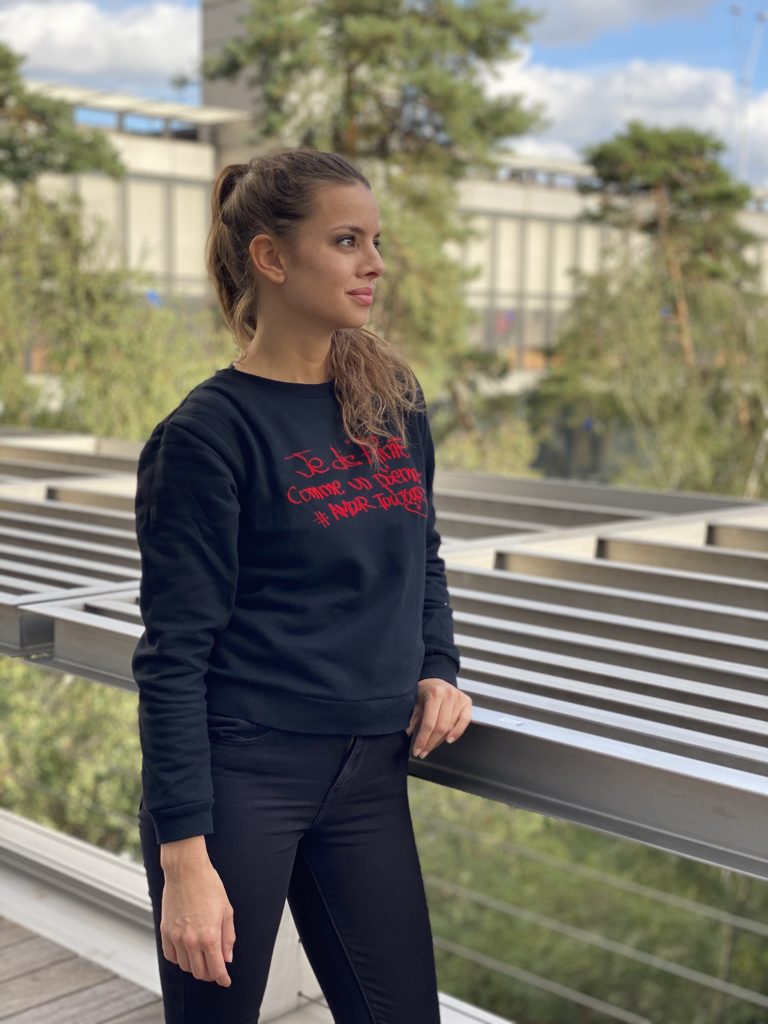
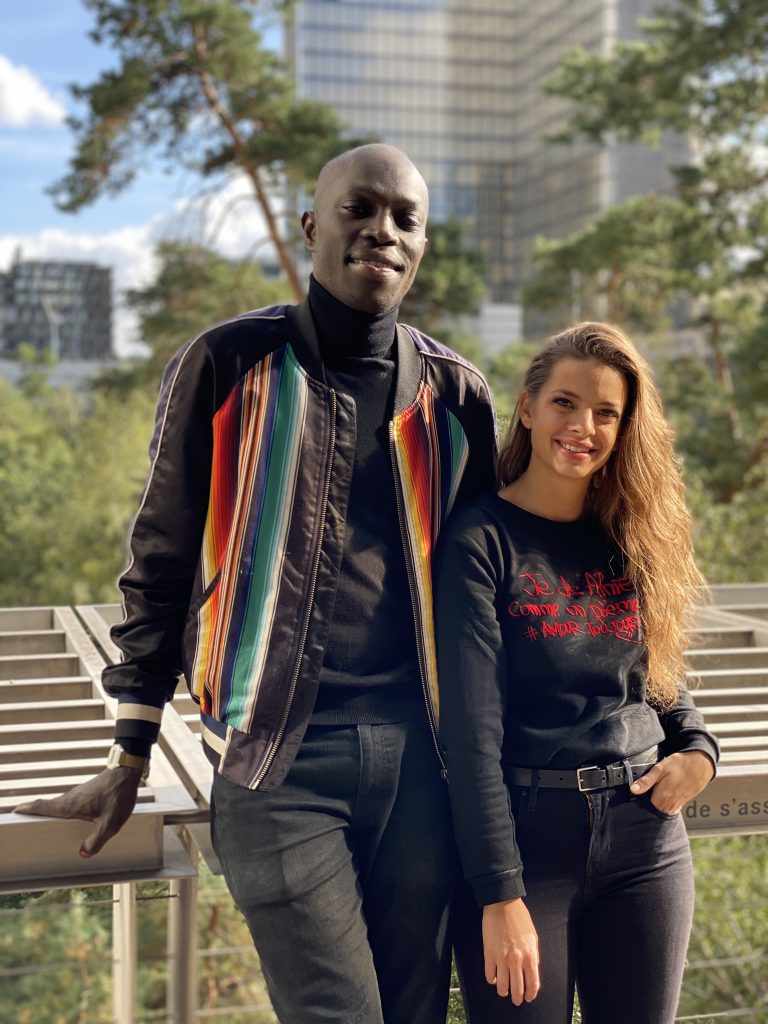

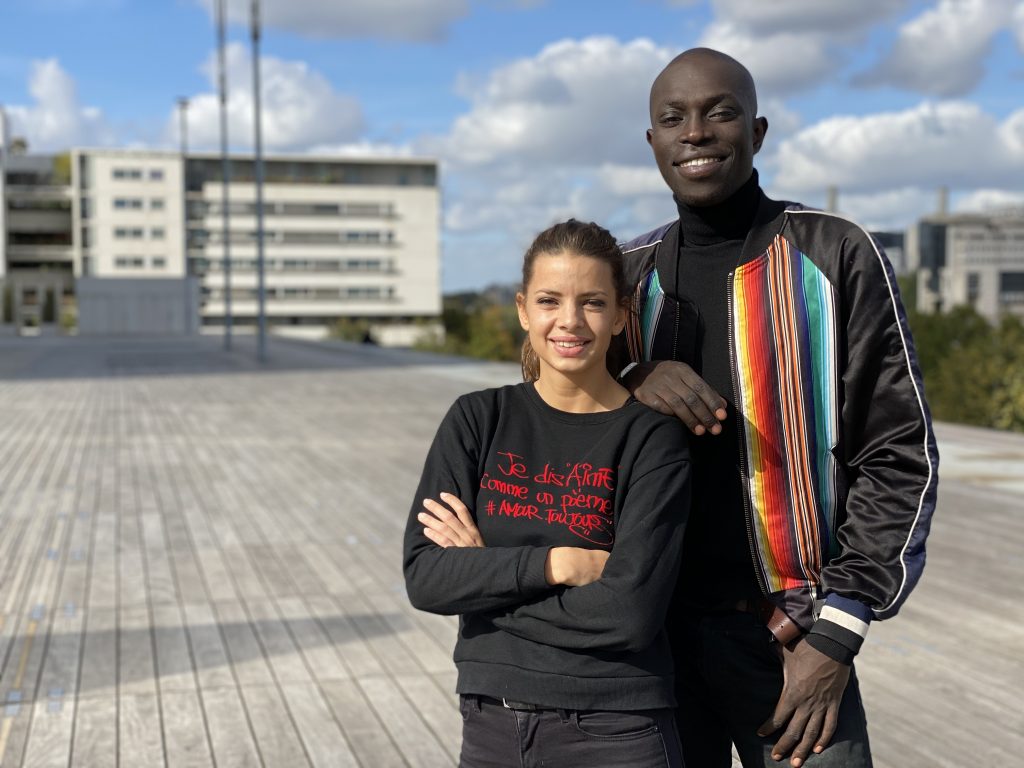


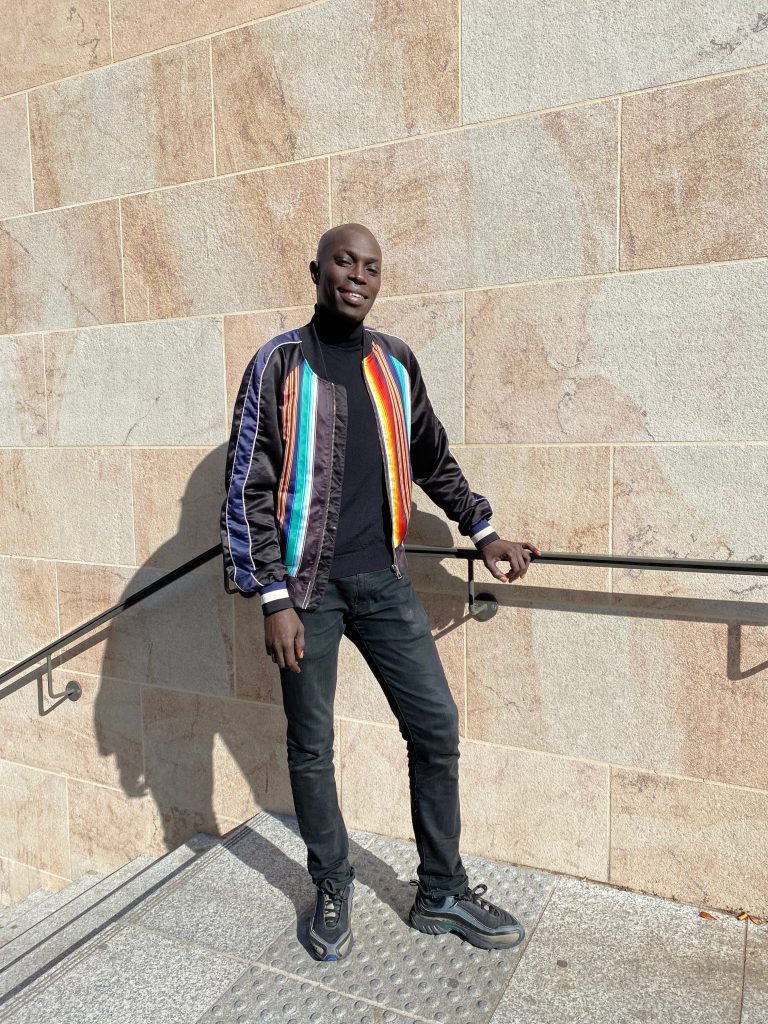
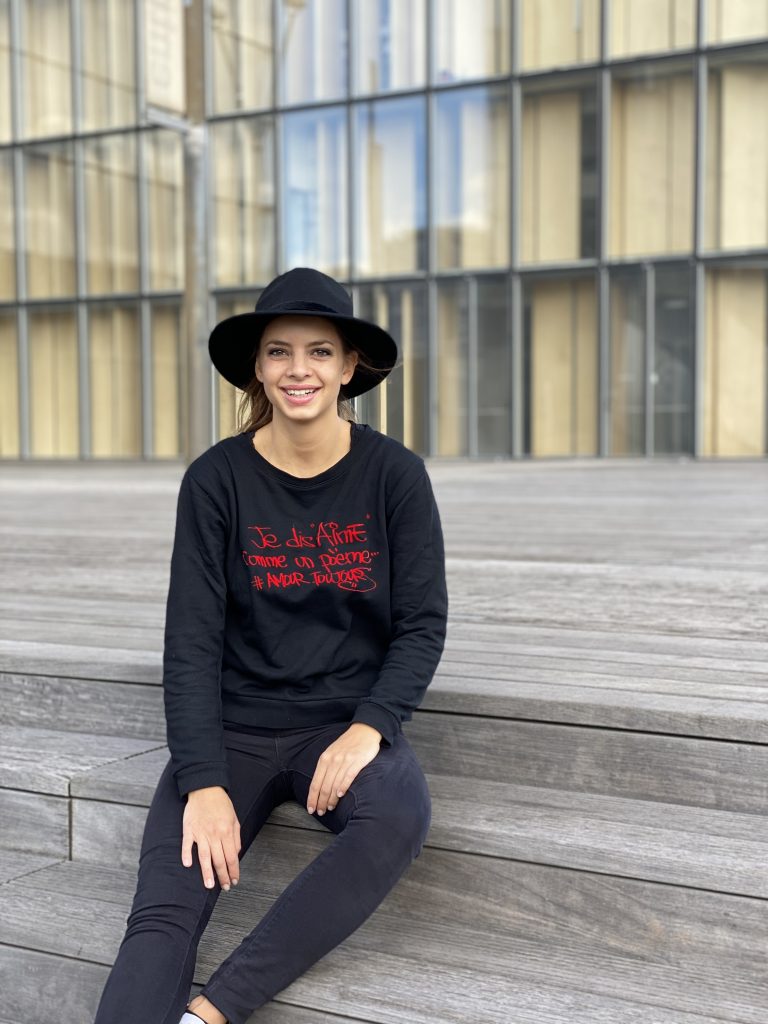
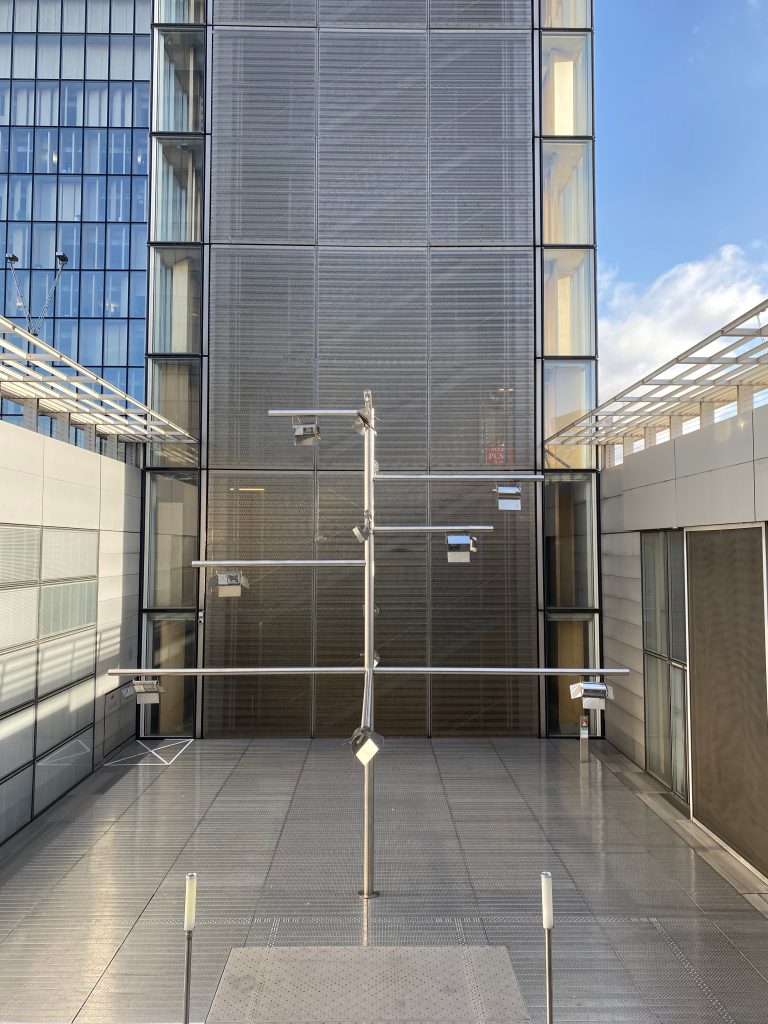
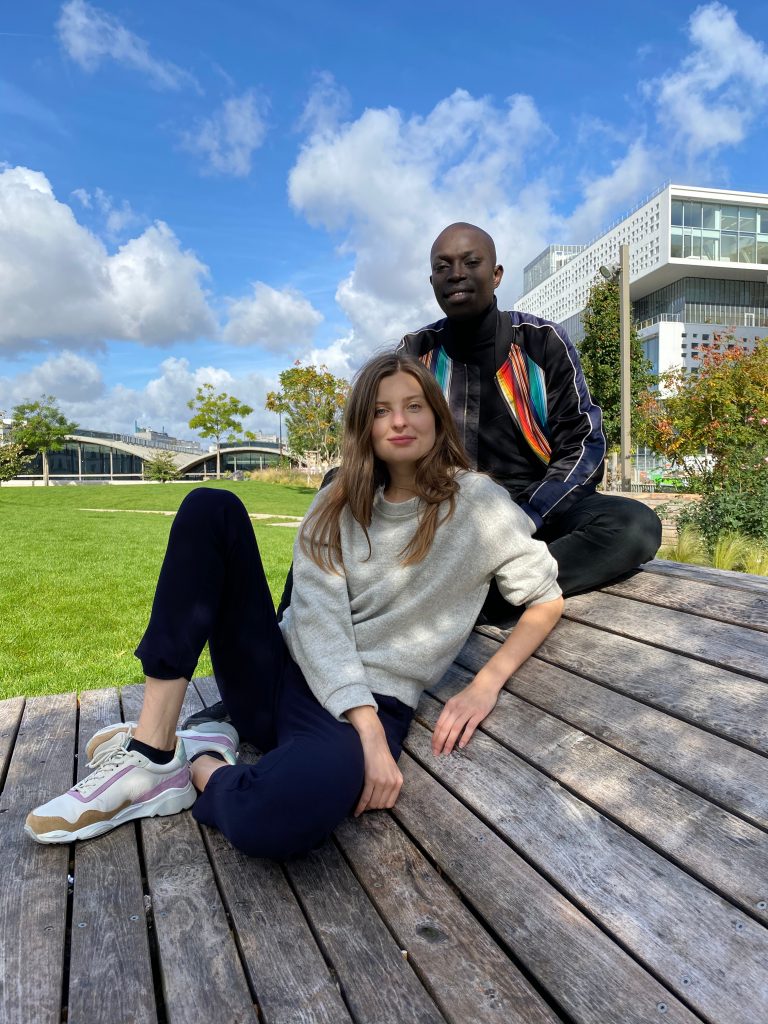
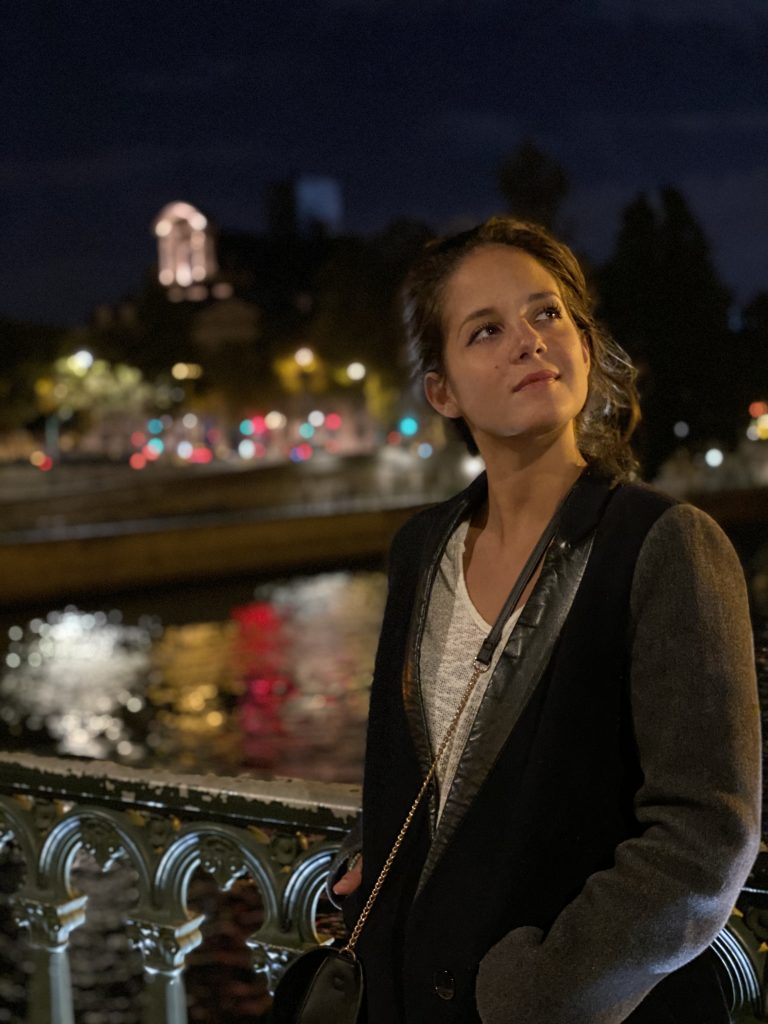

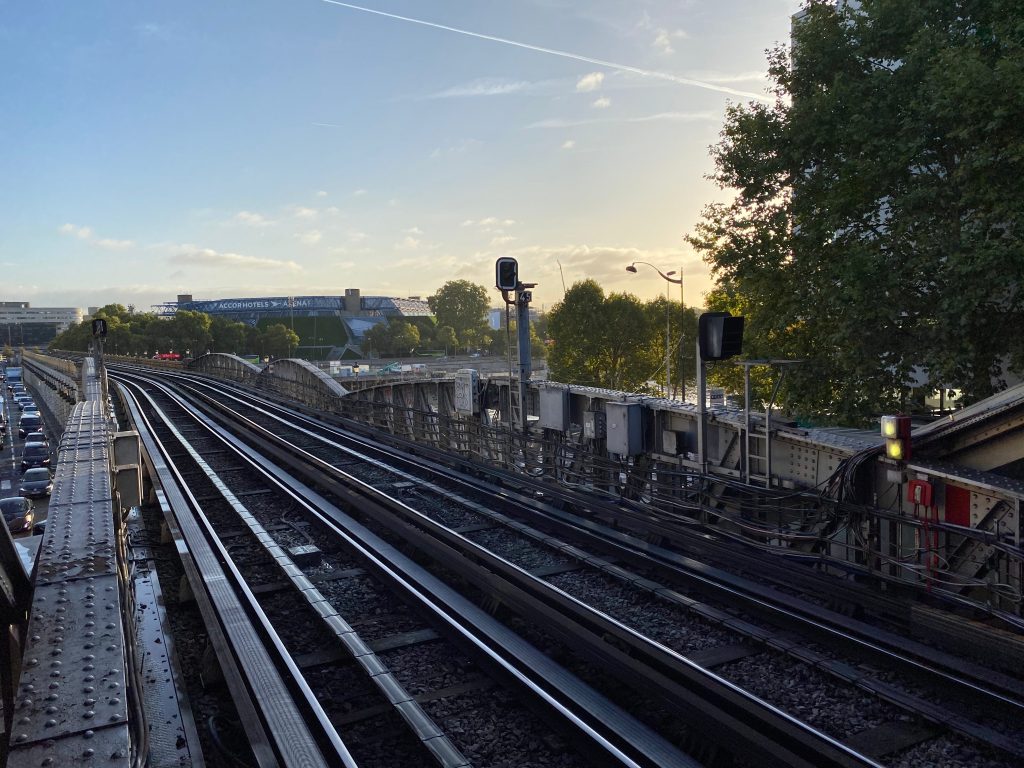
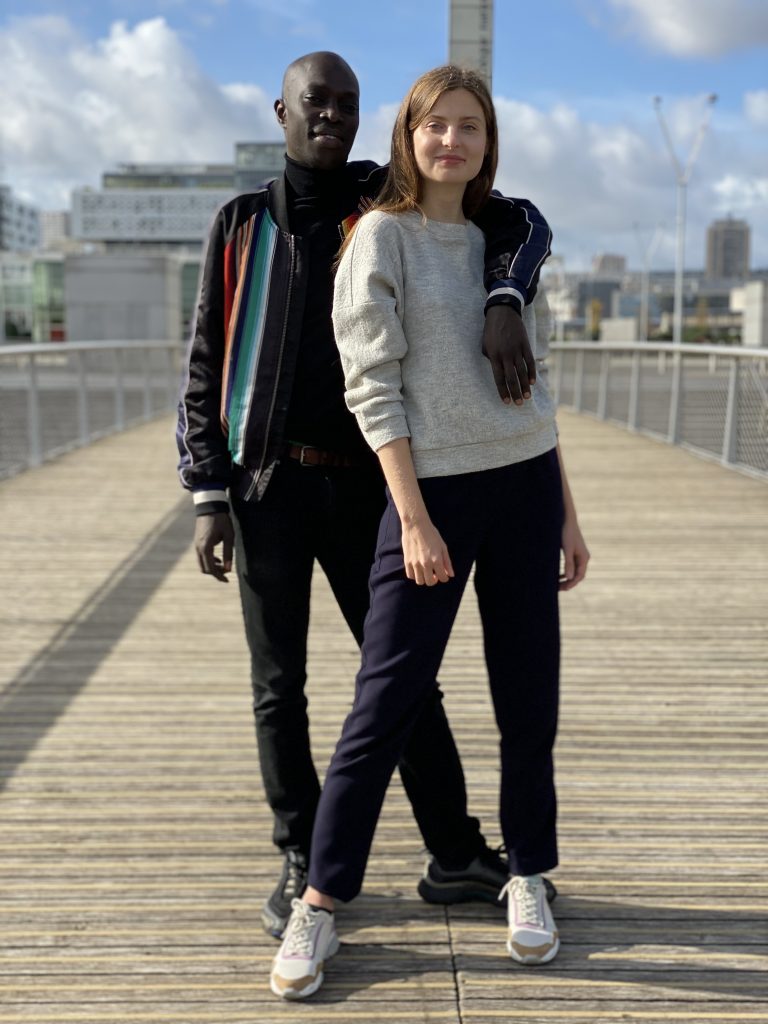




DXOMARK encourages its readers to share comments on the articles. To read or post comments, Disqus cookies are required. Change your Cookies Preferences and read more about our Comment Policy.